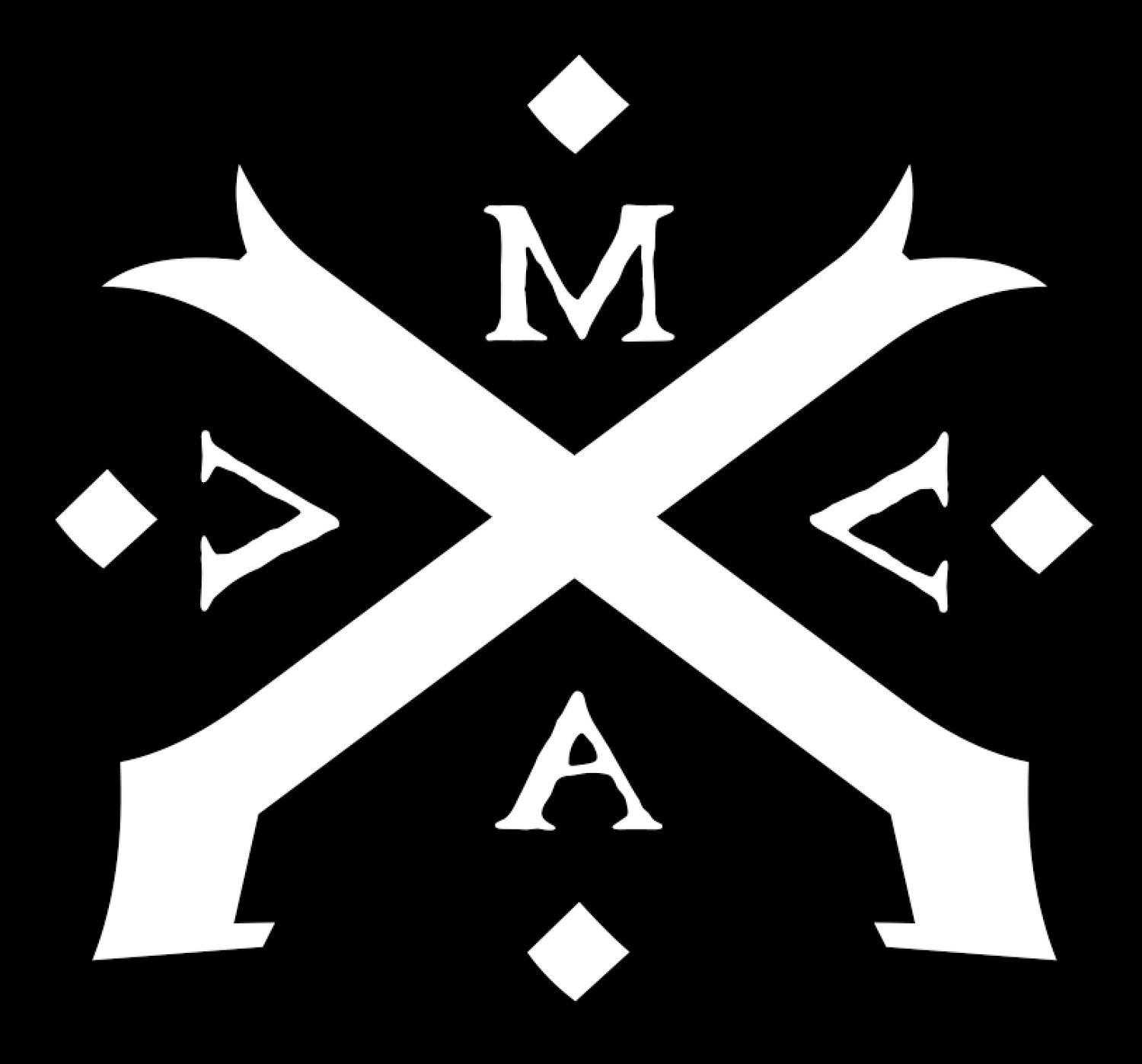Lurkers of the Midsummer Woods
This excellent article from Patheos.com covers the darker side of fairy folklore, the side that seems to have been swept aside and replaced by fairy doors, glitter and tutus. For me the most interesting spirit covered is the Woodwose whose description bares a striking resemblance to the modern day Sasquatch and other associated hairy woodland cryptids.
Outside the Circle: The Bad Fairies Of Litha
Litha or Midsummer, a time of bonfires, mugwort, mythical beings, nights and days of mischief and love. The veil is thin. The Celts, the Norse and the Slavs believed that there were three ‘spirit nights’ in the year when magic ran amok and the Otherworld was near. The first was Halloween, the second was May Eve and the third was Midsummer Eve. All sorts of enchantments are in the air now and Spirits and Fairies abound. What follows here are some of them. These are not your good fairies but tricksters and darker spirits.
Will-o’-the-wisp
A will-o’-the-wisp, Medieval Latin: “foolish fire”, is an atmospheric ghost light seen by travellers at night, especially over bogs, swamps or marshes. It resembles a flickering lamp and is said to recede if approached, drawing travellers from the safe paths. The phenomenon is known by a variety of names, including jack-o’-lantern, friar’s lantern, hinkypunk, and hobby lantern in English folk belief, well attested in English folklore and in much of European folklore.
The names will-o’-the-wisp and jack-o’-lantern are explained in etiological folk-tales, recorded in many variant forms in Ireland, Scotland, England, Wales, Appalachia, and Newfoundland. In these tales, protagonists named either Will or Jack are doomed to haunt the marshes with a light for some misdeed.
In European folklore, these lights are believed to be spirits of the dead, fairies, or a variety of other supernatural beings which attempt to lead travelers to their demise.
Hinky-Punk
Its flame burning through the darkness guides unsuspecting travellers into swamps or over cliffs. Bands of them are often found at the site of Shipwrecks.
Another name for the Will-o’-Wisp, magical lights of European folklore.
Spunkies
Spunkie in the Scottish Highlands where it would take the form of a linkboy (a boy who carried a flaming torch to light the way for pedestrians in exchange for a fee), or else simply a light that always seemed to recede, in order to lead unwary travelers to their doom.The spunkie has also been blamed for shipwrecks at night after being spotted on land and mistaken for a harbor light. Other tales of Scottish folklore regard these mysterious lights as omens of death or the ghosts of once living human beings. They often appeared over lochs or on roads along which funeral processions were known to travel.
Pixies
Also related, the Pixy-light from Devon and Cornwall is most often associated with the Pixie who often has “pixie-led” travellers away from the safe and reliable route and into the bogs with glowing lights.
In Welsh folklore, it is said that the light is “fairy fire” held in the hand of a púca, or pwca, a small goblin-like fairy that mischievously leads lone travellers off the beaten path at night. As the traveller follows the púca through the marsh or bog, the fire is extinguished, leaving them lost.
Phooka
Phooka may refer to Púca, a creature of Celtic folklore or from the Old Irish poc, ‘a male goat’.
Puck was the goat-footed satyr made famous in Shakespeare’s A Midsummer Night’s Dream.
Often thought of as an animal spirit, some accounts believe it gets its name from Poc, meaning he-goat in Irish. In fact, Pooka is a changeling, and can take animal or human form.
The animal Pooka is usually jet black with fiery golden or red eyes. Some associate it with devil!
The mountains and hills are this creature’s domains. Depending on the part of Ireland you lived in, Pooka was thought to be either helpful or menacing. It has been known to help farmers for example, but it can also wreak havoc. Generally however, perceived wisdom holds that an encounter with Pooka is not considered propitious, as this fairy creature is a portent of oncoming doom. Known for its cunning and wile as well as lies and deception, Pooka’s archetype is trickster. It is also a fertility spirit since it has power to create or destroy, as well as ability of human speech, it is a gifted prophesier.
Woodwose
Wild men support coats of arms in the side panels of a portrait by Albrecht Dürer / Public Domain via Wikimedia Commons
The wild man (also wildman, or “wildman of the woods”, archaically woodwose or wodewose) is a mythical figure that appears in the artwork and literature of medieval Europe, comparable to the satyr or faun type in classical mythology and to Silvanus, the Roman god of the woodlands.
The defining characteristic of the figure is its “wildness”; from the 12th century they were consistently depicted as being covered with hair. Images of wild men appear in the carved and painted roof bosses where intersecting ogee vaults meet in the Canterbury Cathedral, in positions where one is also likely to encounter the Green Man.
Robin Goodfellow
In English folklore, Puck, sometimes known as Robin Goodfellow, is a domestic and nature sprite, demon, or fairy.
One of the most popular characters in English folklore of the last thousand years has been the faerie, goblin, devil or imp known by the name of Puck or Robin Goodfellow.
He’s been pictured like a brownie or a hobbit. In a 1785 painting by William Blake, he looks like Pan from Greek mythology. Robin Goodfellow is one of the faeries known as hobgoblins or just hobs. Hob is a short form for the name Robin or Robert (“the goblin named Robin”.) Robin itself was a medieval nickname for the devil. Robin Goodfellow was not only famous for shape-shifting and misleading travellers. He was also a helpful domestic sprite much like the brownies. He would clean houses and such in exchange for some cream or milk. If offered new clothes, he’d stop cleaning. There are stories of the Phouka and Pwca doing similar deeds.
Peg o’ Nell
Peg o’ Nell, the water spirit of the River Ribble, was once a young servant girl at the local Waddow Hall. Legend ~ Peg o’ Nell was said to have slipped through the icey water and drowned in the Ribble while fetching water on a frigid night. To punish those who failed to rescue her, came back every seven years to steal a victim. On Peg’s night, when the Ribble rises to snare a new victim, and, because she could be tricked by drowning some sort of animal, it was considered appropriate to make proprietary sacrifices of small birds or animals to the river spirit.
The water-spirit of the river Ribble in Lancashire. She was said to be the ghost of a servant at Waddow Hall.
Jenny Greenteeth
Jenny Greenteeth is a figure in English folklore. A river hag, similar to Peg Powler or a grindylow, she would pull children or the elderly into the water and drown them. She was often described as green-skinned, with long hair, and sharp teeth. She is called Jinny Greenteeth in Lancashire, but in Cheshire and Shropshire she is called Ginny Greenteeth, Jeannie Greenteeth, Wicked Jenny, or Peg o’ Nell.
A similar figure in Jamaican folklore is called the River Mumma (River Mother). She is said to live at the fountainhead of large rivers in Jamaica sitting on top of a rock, combing her long black hair with a gold comb. She usually appears at midday and she disappears if she observes anyone approaching. However, if an intruder sees her first and their eyes meet, terrible things will happen to the intruder.
In Ireland and Germany she appears as a beautiful woman in a white gown, and is called respectively Bean-Fionn and die Weisse Frau. Although her visage is changed, she is still the same dreaded Jenny Greenteeth, haunting river banks and dragging her victims to their untimely deaths. The moral of all Jenny Greenteeth stories is to stay away from rivers and lakes, and it is thought that she was the imagined creation of mothers who wanted to warn their children away from the water’s edge with frightening tales. Her stories may have also derived from duckweed, an aqueous plant that wraps its tendrils around one’s leg and traps them under water.
Oakmen
At this time of year, when the oak is the most powerful tree, spirits called oakmen guard it. These are the most widespread tree fairies in England. Beware, because they are fierce guardians of their trees and do not really like humans. They appear as forest dwarfs and offer food to passing mortals, but this always turns out to be poisonous fungi disguised by glamour, the fairy magic. They also guard all the forest animals, especially foxes, and punish those who harm them. The rain that gathers in their oak hollows has powerful healing qualities.
This is the season for other spirits too, the drinking kind. Elderflower champagne, Strawberry wine, Black currant mead and Heather ale. It is said the Picts brewed a legendary ale from heather, the recipe for which was a secret. Invading Norsemen tortured the guardians of the secret in order to obtain the recipe, but to no avail.
The Box of Astaroth - The Garden of Earthly Delights Edition II
The first Garden of Earthly Delights Edition triggered a number of commissions from Bosch fans as well as a few Pieter Bruegel the Elder requests which I am currently working on.
Please remember to share, follow and subscribe!
The Box of Astaroth – The Davenport Brothers Edition
Created with a traditional spiritualist theme in mind The Davenport Brothers edition captures the mystery and trickery of the day in the form of a miniature spirit cabinet.
The Davenports began in 1854, less than a decade after Spiritualism had taken off in America. After stories of the Fox sisters, the Davenports started reporting similar occurrences. Their father took up managing his sons and the group was joined by William Fay, a Buffalo resident with an interest in conjuring. Their shows were introduced by a former "Restoration Movement" minister, Dr. J. B. Ferguson, a follower of Spiritualism, who assured the audience that the brothers worked by spirit power rather than deceptive trickery. Ferguson was apparently sincere that the Davenports possessed spiritual powers.
The Davenports' most famous effect was the box illusion. The brothers were tied inside a box which contained musical instruments. Once the box was closed, the instruments would sound. Upon opening the box, the brothers were tied in the positions in which they had started the illusion. Those who witnessed the effect were made to believe supernatural forces had caused the trick to work.
The miniature version of the brother's box illusion mirrors their larger original with the ability to make musical instruments play from within, move objects and even make the curtains twitch in response to questions.
Please remember to share, follow and subscribe!
The Most Mysterious Mansion in London
A wonderful article taken from one of my favourite blogs MessyNessyChic and if you've got a spare £3 million all this could be yours...
Malplaquet House is one of those places that makes everyone in the neighbourhood, or anyone walking past its mysterious overgrown gates, wish they could get a look inside. A home worthy of Miss Havisham herself, until recently this stellar cabinet of curiosities was one of London’s forgotten mansions, uninhabited for over a century, heading towards a fate of demolition…
In the 90s, the four-story Georgian mansion on Mile End Road was rescued by the Spitalfields Trust and became a Grade II listed building. Malplaquet House had even more luck when it fell in to the hands of the best possible buyers imaginable. Enter Tim Knox, British historian, former director of Sir John Soane’s Museum, (another restored London time capsule) and now director of the Fitzwilliam Museum in Cambridge. Together with the renowned landscape gardener Todd Longstaffe-Gowan, these two passionate collectors purchased the 275 year-old East London ruin from the Trust for £250,000. A monumental restoration project began.
Over three centuries, the house had been extensively altered up until its last domestic residents were recorded in 1895. In the 1850s, Malplaquet had seen the last of its wealthy tenants and was divided up into smaller lodgings and two shops were built upon the old front garden. Most of the double-fronted property would eventually just end up as storage space for the shops. When Tim and Todd came along in 1998, they had their work cut out for them.
“Guided by historic documentation and surviving evidence, the forecourt shops were demolished, revealing the house surprisingly intact,” says Fyfe Mcdaid, the estate agency now listing the home for £2,950,000. “Since then the owners have carefully restored the building and its garden setting, making Malplaquet House one of the most unforgettable secret houses of London.”
Unforgettable, spellbinding, thrilling romantic: these are all words that have been used to describe Malplaquet. Before the house went on sale, a local blogger, “The Gentle Author” visited the mysterious mansion and published his account along with some stellar photographs taken by Philippe Debeerst.
"Hovering nervously on the dusty pavement with the traffic roaring around my ears, I looked through the railings into the overgrown garden and beyond to the dark windows enclosing the secrets of this majestic four storey mansion (completed in 1742 by Thomas Andrews). Here I recognised a moment of anticipation comparable to that experienced by Pip, standing at the gate of Satis House before being admitted to meet Miss Havisham. Let me admit, for years I have paused to peek through the railings, but I never had the courage to ring the bell at Malplaquet House before".
'The Devil Made Me Do It', rediscovering the toy more dangerous than the Ouija Board
I discovered this truly bizarre 'toy' by sheer coincidence, or fate you might say. When you're in my line of business you get to meet some wonderfully eccentric people and a recent FeeJee Mermaid commission led me to a client who had one of the strangest collections I'd ever seen. I delivered the mermaid personally to a location near Nottingham as they don't travel well, especially when dropped a dozen times by a disgruntled courier. The client was over the moon with the new addition to his menagerie and we started to discuss other pieces of my work such as The Swami Spirit Altar. I explained that the piece was inspired by the 'Zoltar' fortune telling machines that pepper the esplanades of many seaside towns and that I loved the aesthetics of these quirky amusements.
He then disappeared to make a cup of coffee and returned a few minuted later with two mugs of scalding hot beverages and an old box tucked under his arm. “Here, you can have that”, he said and thrust me the coffee and the box. When I looked inside I was confronted by a plastic demonic face grinning back at me nestled on top of a pile of cogs, dusty springs and dead spiders. “I bet you've never seen one of these before”, he exclaimed to which I replied a resounding “No!”. He sat back in his chair, lit his skull meerschaum pipe and started to recount a tale that not only amazed but also perplexed me. “If you don't believe me, read it for yourself”, he said and pointed at the battered box. Amongst the chipped devil-red Bakelite and flame emblazoned rusty metal was a hand written note of what the mysterious contraption used to be.
'The Devil Made Me Do It', was a 'toy' manufactured by the obscure US Silver Shamrock Toy Co. in 1951. Fans of John Carpenter may recognise the company name as the manufacturer featured in Halloween III: Season of the Witch. In the movie Silver Shamrock Novelties was a mask and novelties company that had a very evil agenda so it was fitting that he may have named it after the original 1951 company. 'The Devil Made Me Do It' was the only item ever produced by Silver Shamrock and the production run was limited to an estimated 40 units. Colman Joyce, the company proprietor was a Baptist fanatic and although 'The Devil Made Me Do It' was made with the good intention of teaching children the evils of dealing with the devil, his venture backfired. After the events I am about to discuss almost all of the 'The Devil Made Me Do It' toys were destroyed and Joyce closed the factory and vanished never to be seen or heard from again.
The concept of the toy was simple and was meant to serve as a moral lesson demonstrating that if you leave your mind open to evil thoughts, the Devil can make you do things beyond your control. The world's first and last possession toy and definitely not something you'd find perched on the shelves in Toys-R-Us. The original machine came with a deck of cards which contained images of sins being committed such as theft, murder, blasphemy, hatred and all of the things you'd expect to find in a child's game created by a religious fruitcake. The child would mix the cards face down and select three at random, placing them in front of the Devil. Taking the Devil's red right hand the child would then move the hand left, right or centre so that it pointed at one of the three chosen cards. Once a final card had been selected the Devil's eyes would eerily light up and he would reveal a ticket naming the chosen card before it was even turned over. The child would then turn over their randomly selected card and it would match the ticket every time! Thus proving that the Devil could make them theoretically commit the sin on the card without them even knowing if they ever veered from the righteous path.
The folk on the bible belt loved the 'toy' as its demonic facade scared the hell out of the kids! Joyce traveled from parish to parish giving demonstrations of 'The Devil Made Me Do It' at Sunday Schools all over the deep south. And as you can imagine, the orders came rolling in. Nobody seemed to ask or be bothered how it worked, they just saw it as a tool to keep the kids on the straight and narrow. The kids also saw it as a challenge and tried to outsmart the Devil, but whatever card they selected the Devil already knew which one they had picked because obviously, the Devil made them do it!
After a year on the road touting his satanic toy to the masses things took a turn for the worse. On the 6th June 1952 in the small town of Prospect Hill a few miles east of Greensboro, North Carolina a young man named Bobby Kelly walked into his local Sunday school with a loaded revolver and gunned down 5 of his friends. As the rest of the class hid under tables to take cover he walked up to the blackboard and scrawled 'The Devil Made Me Do It' in chalk before pointing the gun at his head and firing the sixth bullet. The words on the blackboard struck a disturbing significance with the town as Joyce had only been there months before letting the Sunday school kids play with his 'toy'. Others also saw the date of the murder, the 6th June and that six bullets had been fired as not a coincidence but a sign that the Devil had indeed made Bobby Kelly kill his friends in cold blood. Other rumors circulated that when Bobby had a go on Joyce's toy he had picked the 'Murder' card thus confirming that this had been the catalyst behind the multiple homicide.
Colman Joyce became a hunted man and he was on the most wanted list in three states. Every parish that had purchased a copy of 'The Devil Made Me Do It' performed a blessing and burning of the strange device until nearly all traces of the toy were destroyed. Neither the law nor the church ever caught up with Joyce although it is thought he made it back to his factory, emptied the safe and then vanished. Joyce was never seen again and to this day he is still held responsible for the Prospect Hill murders. Some even believe he actually was the Devil using his toy of terror to infiltrate the church and corrupt it from the inside.
The account you have just read was compiled from the notes of Reverend Morrison who had traveled to the US in the mid 60s as part of an exchange program. He bought the battered remains of what is believed to be the last of Joyce's toys in existence back to the UK. In his notes he comments that the toy had been discovered under the floorboards of a storm damaged church in Wallins Creek while it was being rebuilt. Morrison had been sent to the area to help rebuild the church and provide support to the community, some of which had been made homeless by the storm. Intrigued by the box of broken parts Morrison decided to delve into their devilish past and soon discovered that Joyce's toy was still fresh in the minds of some fearful locals. What remains of 'The Devil Made Me Do It' were discovered by my client at a house clearance in Mansfield UK, the home town of Reverend Morrison. I've no doubt that he bought the toy home where it remaining in storage until his death at the ripe old age of 96.
And so I sit here writing this blog post with the grinning red Bakelite head staring at me wondering if all of this could be possible? A device that can predict something you've chosen before you even know what you've chosen? Does it predict or does it actually influence your choice and if so how does it influence the user? As a designer of illusions I have no idea how it works, but neither has anyone else apart from Colman Joyce who took the secret to his grave.
Regardless, I feel compelled to rebuild and restore this last copy of 'The Devil Made Me Do It' to its former glory and maybe I can finally solve the mystery myself. Every time I look at that head on my studio desk I can almost hear it begging to built once again but unfortunately not all of the parts appear to be there and I have no reference material to work from regarding what it originally looked like. The box contains the following parts -
a red Bakelite head
a black Bakelite cloaked body
a red Bakelite hand and pointing mechanism
6 sin cards – these are individually numbered as 12, 32, 17, 5, 6 and 38 so I assume there must have originally been more than 38 cards
a wooden enclosure that the cloaked body would have been mounted on. This still has some traces of stickered artwork showing the Silver Shamrock logo and some pretty cool looking hotrod style flames around the base
a power cord, probably to power the lights for the eyes although no bulb is present
the rest of the components appear to be an electronic/clockwork mix
Luckily my wife's Uncle in Germany repairs clocks so I'll be shipping the mechanical parts to him for an inspection and hopefully some idea of how they originally worked. To date nothing actually reveals how the prediction/influence mechanism works or if indeed there is one which also leaves open the possibility of it working supernaturally like the Ouija Board. It's a restoration project from hell with a pretty horrific past so it only seems fitting I attempt to resurrect the 'toy' even if it only acts as a demonic conversation piece in my collection.
Has the Devil made me do it? Probably, but Joyce's demonic toy deserves a second chance.
I'll be posting the rebuilt 'The Devil Made Me Do It' on the blog soon so stay tuned!
Please remember to share, follow and subscribe!
My work goes on tour!
I've been aware of Guillermo del Toro's 'At Home with Monsters' exhibition since the news was announced and I blogged about it a few months back.. Due to the vastness of his collection it never even crossed my mind that some of my work that resides in Bleak House would be included.
Last week I received an e-mail from a curatorial assistant at the Los Angeles County Museum of Art (LACMA) along with a photograph of the Ectometron I made for Guillermo a number of years ago. To my utter befuddlement he told me that my work was part of the exhibition and that he wanted the caption information for the display piece! To be part of the exhibition and to be selected as an influential piece from such a huge collection is both an honour and privilege, it's almost beyond belief.
The exhibition is accompanied by a fully illustrated catalogue published by Insight Editions. The 144 page volume is edited by Britt Salvesen, Jim Shedden, and Matthew Welch with contributions by Guillermo del Toro, Keith McDonald, Roger Clark, and Paul Koudounaris. The hardcover catalogue is $29.95 and is available at the LACMA Store and Art Catalogues. It's not available just yet but should be around the 31st July when the exhibition starts.
Following its presentation at LACMA, the exhibition will travel to its co-organizing institutions: the Minneapolis Institute of Art (February 26 – May 21, 2017) and the Art Gallery of Ontario (September 30,2017–January 7,2018).
Here's everything you need to know about the exhibition...
(Los Angeles—April 26, 2016) The Los Angeles County Museum of Art (LACMA) is pleased to announce Guillermo del Toro: At Home with Monsters (July 31–November 27, 2016), the filmmaker’s first museum retrospective. The exhibition explores del Toro’s creative process by bringing together elements from his films, objects from his vast personal collections, drawings from his notebooks, and approximately 60 objects from LACMA’s permanent collection. The diverse range of media—including sculpture, paintings, prints, photography, costumes, ancient artifacts, books, maquettes, and film—totals approximately 500 objects and reflects the broad scope of del Toro’s inspirations.
“To find beauty in the profane. To elevate the banal. To be moved by genre. These things are vital for my storytelling,” said del Toro. “This exhibition presents a small fraction of the things that have moved me, inspired me, and consoled me as I transit through life. It’s a devotional sampling of the enormous love that is required to create, maintain, and love monsters in our lives.”
“By bringing del Toro’s notebooks, collections, and film art into museum galleries, we acknowledge the curatorial aspects of his approach to filmmaking,” says Britt Salvesen, curator and department head of the Wallis Annenberg Photography Department and the Prints and Drawings department at LACMA. “On one level, he carefully constructs and stages his films in the manner of an exhibition. On another level, he fills their plots with commentaries about the social, psychological, and spiritual power of objects. In this retrospective, as in his extraordinary filmography, del Toro demonstrates the energizing effects of cross-pollination.”
Michael Govan, LACMA’s CEO and Wallis Annenberg Director, says, “This retrospective is a wonderful example of Art+Film at LACMA. Del Toro encourages us to ignore our traditional art-historical narratives and hierarchies of high and low culture, just as he blends and reinvents conventional genres in his films. With his ability to collapse time and space, history and fiction, nature and fantasy, he taps the latent potential at the core of our institutional mission.”
Exhibition Organization
Guillermo del Toro is organized into eight thematic sections. The exhibition begins with Childhood and Innocence, exploring the central role children play in many of del Toro’s films. Often, these children can perceive alternate realities and give expression to unfiltered emotions in ways that adults cannot. Del Toro does not insulate his young protagonists from fear, abandonment, harm, or even death. At some level, del Toro’s films endlessly revisit his own childhood, which he felt was marred by a strict Catholic upbringing and bullying classmates but redeemed by books, movies, and horror comics. He began drawing at a very young age. To this day, del Toro maintains his early habit of keeping a notebook at hand to record ideas, phrases, lists, and images. Resources for his films, these journals are also essential to his evolution as an artist.
Victoriana, the next gallery, references the Romantic, Victorian, and Edwardian ages, as well as latter-day interpretations of the Victorian era. Charles Dickens, the quintessential Victorian writer, inspired the name of del Toro’s personal residence, Bleak House, a curated space from which many objects in the exhibition are borrowed. Dickens’s blend of realism and fantasy, fascination with the city, sense of humor, and predilection for taxonomy, multifarious character types, and intricate plot twists resonate in del Toro’s films. This gallery also demonstrates del Toro’s interest in the Victorian relationship to science, in which humans attempted to exert dominion over nature through meticulous categorization. As suggested by his extensive collection of insect specimens, images, and trinkets, del Toro has inherited a fascination with such creatures, although the insects in his films tend to break free of human control in spectacular ways.
Visitors will subsequently experience a version of Del Toro’s Rain Room (not that Rain Room), a favorite spot in Bleak House in which del Toro has installed a false window and special effects to simulate a perpetual thunderstorm.
The next section explores del Toro’s interest in Magic, Alchemy, and the Occult. His films are full of puzzles, talismanic devices, secret keys, and quests for forbidden knowledge. Many of del Toro’s characters are scientists, contemporary successors to the monks and alchemists who explored the boundaries between the holy and unholy. He cites the influence of H.P. Lovecraft, the idiosyncratic American writer whose work is considered foundational for the genres of horror and science fiction. Lovecraft’s vivid evocations of madness, transformation, and monstrosity continue to be a major source of inspiration; for the last decade, del Toro has been attempting to adapt Lovecraft’s novella At the Mountains of Madness (1936) for the screen.
Movies, Comics, Pop Culture delves into del Toro’s obsession with cinema, from B movies and horror films to directors Alfred Hitchcock and Luis Buñuel. Del Toro’s voracious appetite for film is matched by his enthusiasm for comic books and his admiration for a wide range of illustrators such as Moebius (Jean Giraud), Frank Frazetta, and Richard Corben. He has directed several comic-book adaptions, working closely with Mike Mignola on two films based on his Hellboy series. Always, del Toro refuses to abide by the traditional hierarchies between high and low culture.
Frankenstein and Horror reveals del Toro’s lifelong love affair with the tale of Dr. Frankenstein and his monster. He first absorbed the story as a child, via James Whale’s 1931 film, impressive in its Expressionist-inspired visual beauty. As a teenager, he read Mary Wollstonecraft Shelley’s novel Frankenstein; or, The Modern Prometheus (1818), which emphasizes the monster’s essential fragility and vulnerability. The story became a touchstone for the young del Toro, who identified powerfully with the creature’s outsider status. The filmmaker now finds in Frankenstein an analogy to his directorial approach. Like the monster, his films are amalgams of used, discarded, and diverse source materials, given new life and purpose.
Del Toro’s fascination with monsters of all types is showcased in Freaks and Monsters. He sees some monsters as tragic: beautiful and heroic in their vulnerability and individuality, they mirror the hypocrisies of society and bring to light corrosive standards of perfection. Though he identifies with the tragic type of monster, del Toro is also adept at creating truly terrifying ones. He begins by thinking of a monster as a character, not simply an assembly of parts. It must be visually convincing from all angles, both in motion and at rest. In his notebooks, he constantly records ideas for distinguishing physical features that may come to fruition only years later. In addition to drawing the initial concepts, he is closely involved in fabrication—he entered the movie industry in Mexico as a special-effects artist—and has often expressed his preference for practical effects as opposed to computer-generated imagery.
The final section is Death and the Afterlife. Growing up in Guadalajara, Mexico, in the late 1960s and 1970s, del Toro had a number of disturbing confrontations with death, seeing corpses in the street, in a morgue, and in the catacombs beneath the church. His strict Catholic grandmother instilled in him the notion of original sin and even submitted him to exorcisms in a futile attempt to eradicate his love of monsters and fantasy. The pursuit of immortality—promised in Catholic doctrine as the reward for following the church’s teachings—is often seen in his work as a misguided, arrogant desire, destined to bring about the downfall of those caught up in it. Del Toro’s films often include characters acting entirely out of self-interest alongside others who are forced to make sacrifices. His flawed or damaged characters frequently find purpose in community: they take responsibility for their own survival and that of the individuals and environments around them.
About LACMA
Since its inception in 1965, the Los Angeles County Museum of Art (LACMA) has been devoted to collecting works of art that span both history and geography, in addition to representing Los Angeles's uniquely diverse population. Today LACMA is the largest art museum in the western United States, with a collection that includes over 130,000 objects dating from antiquity to the present, encompassing the geographic world and nearly the entire history of art. Among the museum’s strengths are its holdings of Asian art; Latin American art, ranging from masterpieces from the Ancient Americas to works by leading modern and contemporary artists; and Islamic art, of which LACMA hosts one of the most significant collections in the world. A museum of international stature as well as a vital part of Southern California, LACMA shares its vast collections through exhibitions, public programs, and research facilities that attract over one million visitors annually, in addition to serving millions through digital initiatives such as online collections, scholarly catalogues, and interactive engagement. LACMA is located in Hancock Park, 30 acres situated at the center of Los Angeles, which also contains the La Brea Tar Pits and Museum and the forthcoming Academy Museum of Motion Pictures. Situated halfway between the ocean and downtown, LACMA is at the heart of Los Angeles. Location and Contact: 5905 Wilshire Boulevard (at Fairfax Avenue), Los Angeles, CA, 90036 | 323 857-6000 |
rite here...
Fairies, demons, and ghosts: Shakespeare’s fascination with the supernatural
Although there was hostility towards witchcraft and sorcery well before the 16th century, it is in this time period where we see religious and legal punishment juxtaposed with the increasing use and enjoyment of special effects in plays to convey magic and the supernatural. Laws and statues against witchcraft were passed, the popularity of witch trials was beginning to rise, yet such an atmosphere did not discourage Shakespeare and other playwrights from incorporating otherworldly elements in their works. Early modern drama involved Fairy Kings and Queens, devils and demons, human magicians, minor fairies and sprites, and ghosts and apparitions, all with different levels of power. Depending on the play, a being might have a number of abilities and serve a number of different purposes — be it corrupting humans, serving masters, prophesying, or casting spells. Discover more about Shakespeare and the supernatural via the graphic below.
Doomsday VII Review
Prologue
As I entered through the castle gate the courtyard seemed eerily quiet. The horse drawn coach that had just taken me over the treacherous moors galloped into the distance while my shadow grew fainter as the sun slowly set. Sneaton Castle sat high upon the cliffs of Whitby overlooking the icy North Sea and the vampire infested fishing town below. It would soon be dark and the once busy streets quickly became deserted. Something gave me the impression that I also needed to follow suit and find a safe sanctuary before darkness fell
I had been summoned here by telegram some weeks earlier. The mysterious note, written in a strange ink that I could only assume was a fetid concoction of fish oil and blood, informed me that an annual gathering was about to take place. Once a year, on a given day when the stars align, a door shall open and strange adepts from remote corners of the globe will gather to share dark secrets and partake in forbidden rituals. Today was that day.
Although my invitation gave a date and location there was nobody at the castle gate to greet my arrival. My coach driver thought it unusual that I had been invited here as he proclaimed that, “The old Sneaton place had been empty for years. Nobody in the village dare go up after dark, what with all the screaming and strange lights an' all.” I shrugged off his superstitious clap-trap and apprehensively started to explore further.
In the center of the courtyard stood an old gypsy caravan, the doors wide open as if someone had been unloading its contents. On the sides, painted in a quirky carnival font were the words 'Dr. Diablo' and the figure of a man with a unnerving grin. I took an inquisitive look inside to see various instruments of magic. The smell of warm latex and talcum powder hung in the air like a perverted fog. Swords and torture devices hung from the leopard skin lined walls, from this alone I knew that the mysterious owner must be from Liverpool. With no sign of the deviant owner I continued my search.
The castle towers loomed over me like watchful stone giants as I ventured up a cobbled lane flanked by empty buildings. Then I smelt it. A faint scent of burning wood and the chatter of voices. Red embers floated in the humid night air and I followed the sound and scent like a bloodhound on the hunt. I came to the end of the row of small buildings and I cautiously peered around the corner. I could see fifty or more figures silhouetted against a large fire pit. The cackle of insane laughter mixed with the crackle of the burning logs became louder and my head started to swim as an intoxicating rhythm began to pound in my ears. It was then I saw the leader of this disturbing 'fire ritual'. A short stout man with a sweaty complexion and nipple tassels jeered at the crowd as they chanted the words, “Mind Wraith! Mind Wraith!” repeatedly until the strange dwarven whipster walked slowly through the flames, unscathed by the hellish furnace.
I was so transfixed by the hypnotic spectacle I had not heard the approach of someone or something from behind. Suddenly, a heavy hand slammed on to my shoulder and I spun on my heel to confront a tall chiselled man who spoke with a German accent. “Velcome to Doomsday! You're just in time for ze burning!” As he manically laughed I started to feel myself sweat as a cloud of overwhelming humidity descended on me. What was this strange magick? My legs gave way beneath me and my vision began to blur whilst the world around me started to slowly fade.
As my eyes finally closed, in the distance I heard the German voice once again,“Voodini! Oskar! Come give me a hand! I've found a sacrifice for ze altar!”...
For the past two years I have been the event organiser of Doomsday, the annual gathering of bizarre magicians, story tellers and adepts of the alternative arts. Originally conceived by Roni Shachnaey seven years ago, Doomsday is the best convention of its type in Europe. Every year people from all over the world make the pilgrimage to Whitby for a weekend like no other. What other magic convention can claim to be hosted in the home of Dracula AND in a castle?
Doomsday has started to see a dramatic increase in attendees proving that our shadowy corner of the art is alive and more popular than ever before. It was wonderful to see familiar faces and new blood on the scene as well as meeting the rabble of regulars. Although it is promoted as a convention it is and always has been more of a family gathering. The newcomers were welcomed with open bat-winged arms and I am sure they will return year after year.
Quite a few attendees arrived in Whitby on the Thursday so that they could explore the town and take in all of the Gothic charm. The walk up to the abbey is a must and for a measly £3 you can experience stellar attractions such as The Dracula Experience, so bad it's good! For our overseas visitors there is plenty to see and do in the days prior to Doomsday so you can even make holiday of it and most do.
In a bid to save my liver from a heavy first night of socialising I headed south to Scarborough to see Roni Shachnaey. Unfortunately Roni was unable to attend Doomsday due to health issues so Alex Wallace and I decided to take Doomsday to him. Over a wonderful meal cooked by Laraine I was enlightened about the dark origins of Doomsday and how it is the estranged lovechild of another gathering that is ironically not as immortal as the name suggests.
This year we kicked off with a new event. On a small patch of land in the castle grounds two tons of wood was tossed into a pit and set alight for the Doomsday Fire Walk! Iain Jay and his industrious team of circus performers created the most memorable start to Doomsday to date. I must admit that virtually everyone was rather apprehensive at the idea of walking through a 10 foot pit of fire but it only took one volunteer to go for it and nearly everyone followed. Rather like lemmings I suppose! As the majority of us are destined to go to hell it was a nice preview of what's to come and I made two trips across the burning pit with nothing more than sooty feet and a huge grin.
We then returned to the castle for the first lecture of the weekend. Never before has there been a more suitable lecture for Doomsday. Matteo Borrini, Forensic Anthropologist and star of the National Geographic documentary series gave his personal account of the 'Plague Vampire Exorcism'. My personal highlight of the weekend was meeting Matteo who's knowledge and persona encapsulates what nearly every bizarre performer strives to be. He is a truly unique person and an asset to the community.
Doomsday then officially opened with Dr. Diablo's Carnival Macabre presented by the funniest chap I know, Michael Diamond. From a personal perspective Doomsday would not be the event it is today without Michael and his team, the charming Katie Trickett and Bendy Bendini. Nothing sets the scene more than some good old sideshow acts to amaze and disturb the punters. Human Blockhead, The Radium Girl and Bendy pushing an unhealthy amount of needles into his face; now that's entertainment!
The Doomsday ethos is certainly work hard and play hard with most of the crowd finally heading to the bar to 'catch up' until the early hours of Saturday morning. It was going to be a long day and what better way to prepare yourself than stocking up on pizza and ten pints of Hobgoblin ale? Of course, not everyone drinks alcohol and the convent next door supplied holy water on tap. I like to think it was this that gave me the 'dicky tummy' and not the Lobster Tikka Masala I had eaten a few days previous. We are denizens of darkness after all!
What better way to start Saturday morning than with a session designed to get everyone up on their feet, whooping and hollering. I knew Saturday morning would be tough for some of the Friday night party animals so I added Ian Harvey Stone as the first lecture to get the blood moving. Ian's lecture 'Finding your voice in the magical landscape' was a workshop on how to vocally present yourself on stage professionally and in the 90 minutes that followed I learnt lots. Although I'm no performer I still lecture regularly and the areas that Ian covered were worth their weight in gold. Ian served his slice of how to command the stage with energy, humour and lots of audience participation making an unforgettable and valuable start to the day.
World record breaking strongman Stuart Burrell then took to the stage to give a whole new meaning to the phrase 'he couldn't punch his way out of a wet paper bag' by ripping out of ca hained and padlocked chainmail vest. He also demonstrated ripping a tennis ball in half and breaking free from cable tied wrists. There was even a bit of real blood much to the crowds delight.
Roger Curzon then recalled the tale of Uncle Albert's Box and the dark contents concealed within. Delivered with Roger's much loved deadpan northern charm it was Doomsday's first magic performance and a satisfying one it was too. Roger is a Doomsday regular who I remember performing years ago so it was wonderful to see him back doing what he does best.
Setting up a complete cabinet of curiosities exhibition for one of the UK's largest horror conventions in 3 weeks is a challenge right? Well Andy Cooper, Nik Taylor and Tristan Stothard managed to do just that AND make money from it AND make it so popular they are also doing it again this year. Andy and Nik gave a light hearted account of how they created some intriguing exhibits to shock and disturb the punters. A possessed Mr.Punch, a mysterious Oracle and Winston, a terrible example of taxidermy all made an appearance and gave us all a motivational kick of what can be achieved with lots of enthusiasm and very little time. Unfortunately Tristan was unable to attend Doomsday this year but I'm hoping he'll bring is Psychic Pain to Whitby next year.
A swift but hearty lunch provided the Doomsday crowd with some much needed energy although a double helping of dessert left me with a post-lunch sugar crash big enough to down an elephant. Dealers dealt while arcane knowledge was whispered and shared amongst the adepts before Luke Jermay took to the stage.
To watch Luke lecture or perform is a captivating experience. His knowledge and confidence of character pushes you down into you seat and commands your attention for the entirety of the lecture. As I mention previously, I'm not a performer although every time I see Luke it makes me want to pick up a deck of cards and at least have a go. And in the past I have to much success, that's if you consider baffling your Gran and elderly Aunt successful. Other Doomsday members though who do perform will have taken huge amounts of inspiration, methods and ideas away with them. Luke even shared some routines that he'd never revealed before especially for the Doomsday crowd. It's my birthday next week and a Marksman Deck is on my list for sure!
The great thing about my good friend Oskar is that in the UK nobody has a clue who he is. Yet, back in Sweden he is the star of the TV show 'Mysteria'. Only in Sweden can you get away with a kid's TV show where a group of wizards run around Stockholm trying to catch an accidentally summoned demon with the aid of random children. They also conduct a séance with a group of 8 years olds as well as invoke the ghost of a witch. Good, clean family TV. Oskar and Robert Dahlstom, also a star of 'Mysteria', gave translated excerpts of the series and demonstrated some of the amazing props Oskar created specifically for the show.
The final act of the afternoon was Doomsday veteran Tracy Wise. Every storytelling magician should look at Tracy's act and take note as her ability to captivate the audience and spin a good yarn is impeccable. 'Nursery Crimes' presented the dark origins of some of our favourite childhood nursery rhymes while intertwining magic and music to create an unforgettable performance. Those attending Doomsday South in November will see more of what this very clever and beguiling lady can do.
The 2 hour dinner break gave the crowd a chance to head into Whitby to sample what the local fishermen had dragged ashore, served with chips and lager. The typical gloom of a British seaside town gave way to the unusual spectacle of sunshine and everyone came back fully charged for an evening of entertainment.
The Hex Factor was born out of numerous requests from magicians wanting to perform at Doomsday. Rather than stick with the usual gala show format I thought it would be more interesting to create a whole new event that would see performers competing head to head for a hideous prize. And so the Hex Factor was born and the first 8 contestants stepped up before a foaming crowd and a trio of steely judges.
The standard of the Hex Factor performances proved that those who don't normally perform for a large crowd actually should! Ewan Callison gave the evening an edgy start by talking to 'dummy', his small ventriloquist doll while performing a eerie dolls house séance. For Poe fans, Kevin Lynch's fast paced tale of numbers and messages from beyond the grave had the audience scratching their heads. Jim Critchlow not only created a great performance but also spawned a demonic mascot for Doomsday, the mighty Wucifer. The horrific helium filled satanic symbol hovered over the stage for the duration of the evening. The last slot before the interval was a touching performance from newcomer Luke Robson who's spirit slate routine about a dearly departed friend simultaneously touched and entertained.
After 20 minutes of liquid refreshment we kicked off with Matteo Borrini once again with a tale of savage Liverpudlian lycanthropy. Representing Belgium was Wino Caestecker whose performance would eventually win The Hex Factor by a considerable amount. Emotional and devilishly devious, Wino played the audience like a pro to the point where I thought he was going to have a nervous breakdown live on stage. But of course it was part of the act, or was it? Either way Wino scooped the first prize and highly deserved it was to. Adam Daniel followed with my personal Hex Factor highlight as he produced the old Victorian board game classic 'Guess Whom'. A clever, humble performance delivered with a Derbyshire drawl which reminded me of home well, the rough parts anyway! Finally Les Brown performed his Russian Roulette with BB guns routine. We all uncomfortably watched as Les fired pistols into his mouth, eyes and head, empty ones at least. He successful dodged the last bullet and poor Pauline missed the life insurance payout once again.
The Hex Factor is here to stay and entries for 2017 are already being booked. It's about time that our dark corner of the magic world had its own competition and Doomsday is the place to come if you want to win the newly coveted award.
The dates for Doomsday VIII are already set and tickets will go on sale shortly. Put a big fat cross in your diary and make sure the weekend of 19th - 21st May 2017 is free. Don't be one of the crowd who always comment on how they wished they could've been there, just do it! As always, the venue is limited on size so tickets will be limited and this year we were almost at maximum capacity so book early to avoid disappointment.
And for those unable to wait another year there is always Doomsday South in November. Set in the gothic surroundings of Simon Drake's House of Magic this will be another event not to be missed. There is more emphasis on occult & paranormal subjects than just magic so expect a diverse crowd and an excellent opportunity to network with all walks of life from the world of alternative arts. Confirmed lectures and acts for the first ever Doomsday by Gaslight are Reece Shearsmith, quarter of the award-winning comedy team The League of Gentlemen and star of Inside No.9, David Farrant will be giving his account of the Highgate Vampire incident, Scott Wood from the South East London Folklore Society will discuss urban tales of the London Underground, Matteo Borrini returns to give his Plague Vampire Exorcism lecture so be sure to bring a strong stomach! Tracy Wise who is not only an accomplished magician and forensic scientist but also an expert on OOPArt (out-of-place artifacts) will present a lecture regarding ancient objects found in a very unusual or seemingly impossible contexts. Luke Jermay will also grace the House of Magic stage with feats of mystifying mentalism and finally film director David Chaudoir will be presenting a private screening of his short 'Bad Acid', the dark tale of a washed up cabaret hypnotist who gets what he wished for, but not in the way that he wanted.
The weekend ticket includes lunch and a private Jack the Ripper walk around Whitechapel on the Friday night before the event. For those arriving early myself and Freddie Valentine will also take you on a personal tour of some of London's darkest and mysterious locations followed by the obligatory social at the Ten Bells and Dirty Dicks. If that wasn't enough to tempt you there will also be a prize draw to win a copy of Dolly Darko MkII so if you win you may need to book another seat on the train, she likes to sit alone...
Doomsday awaits those who dare, but be aware; no one who attends remains unchanged!

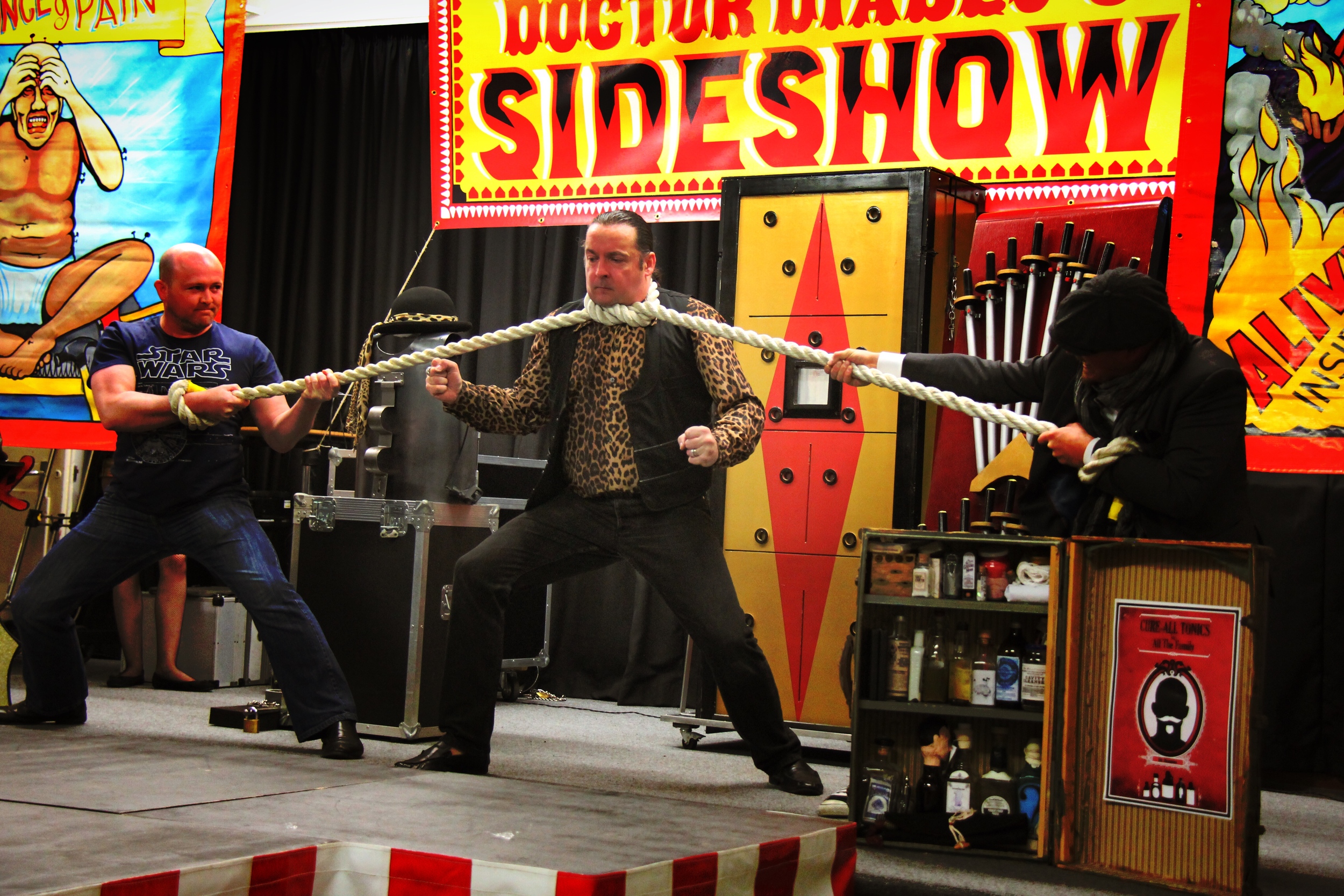
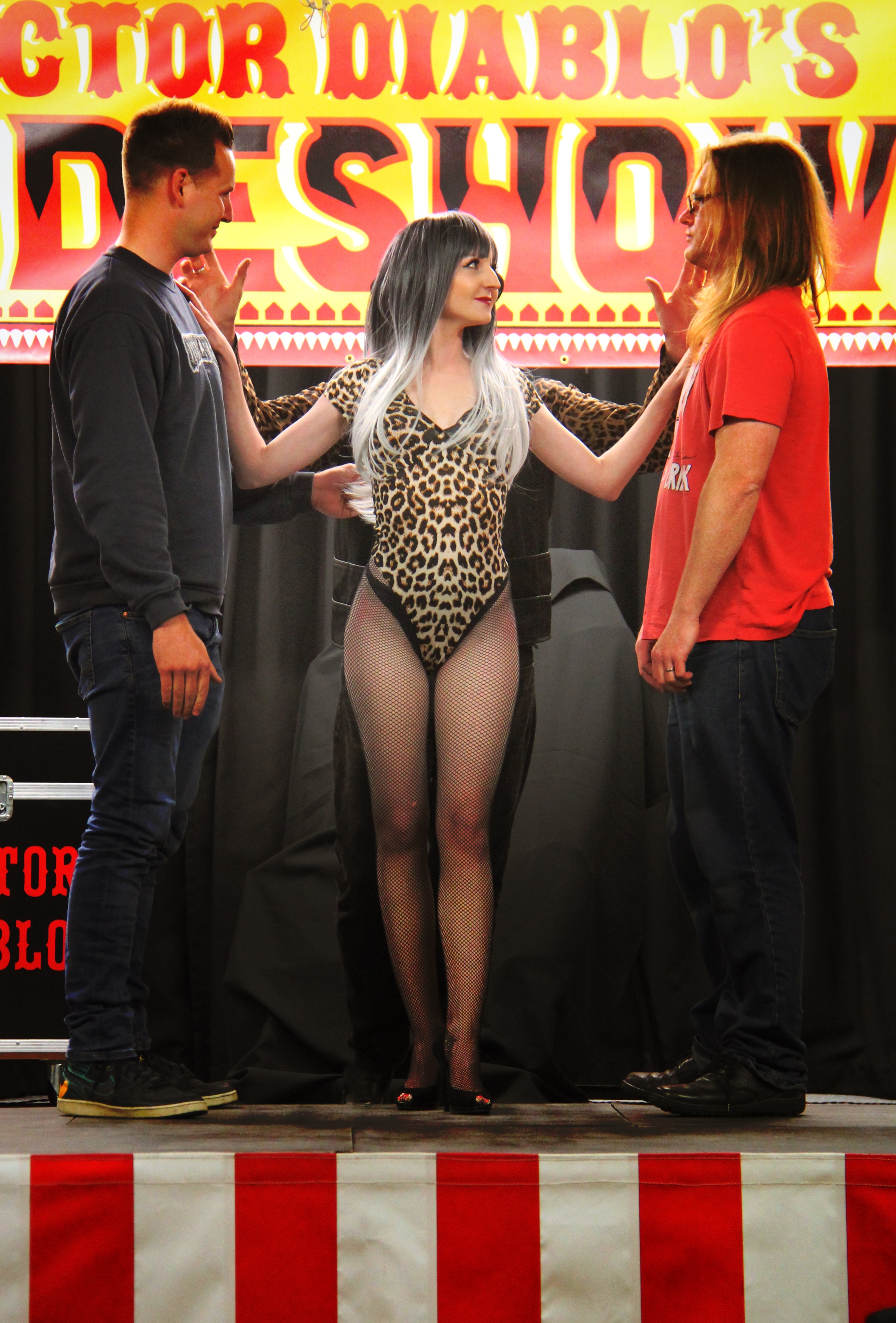
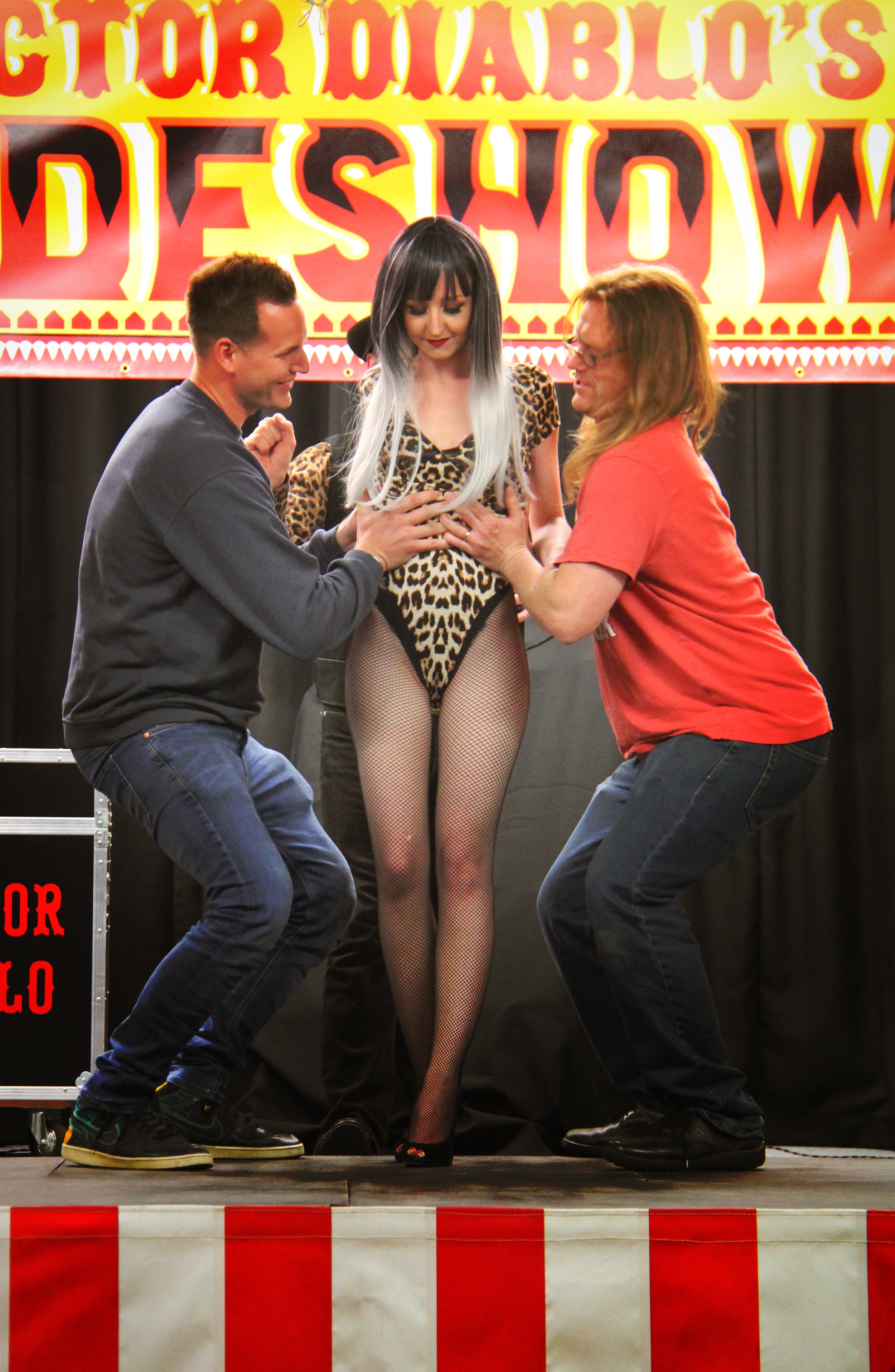
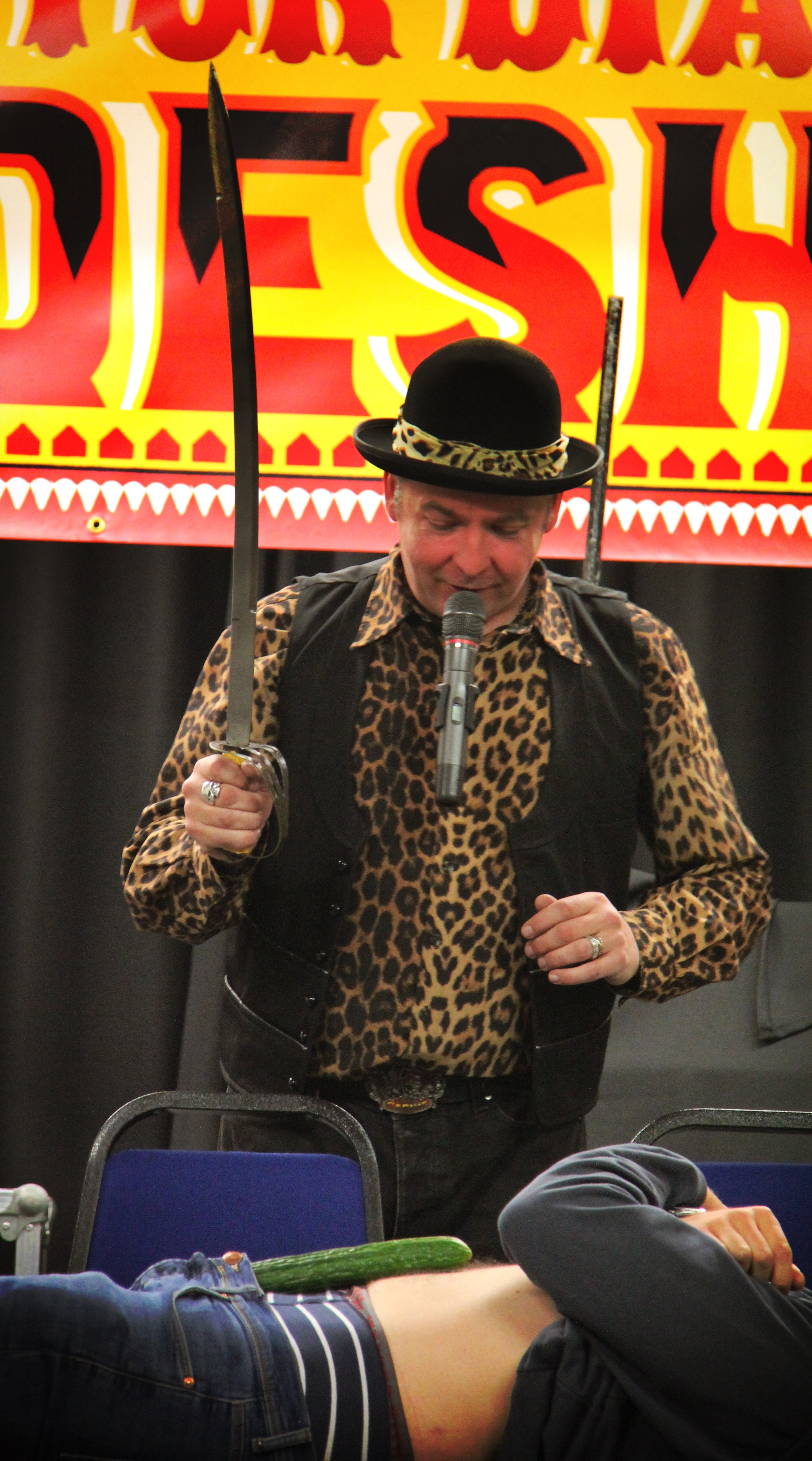
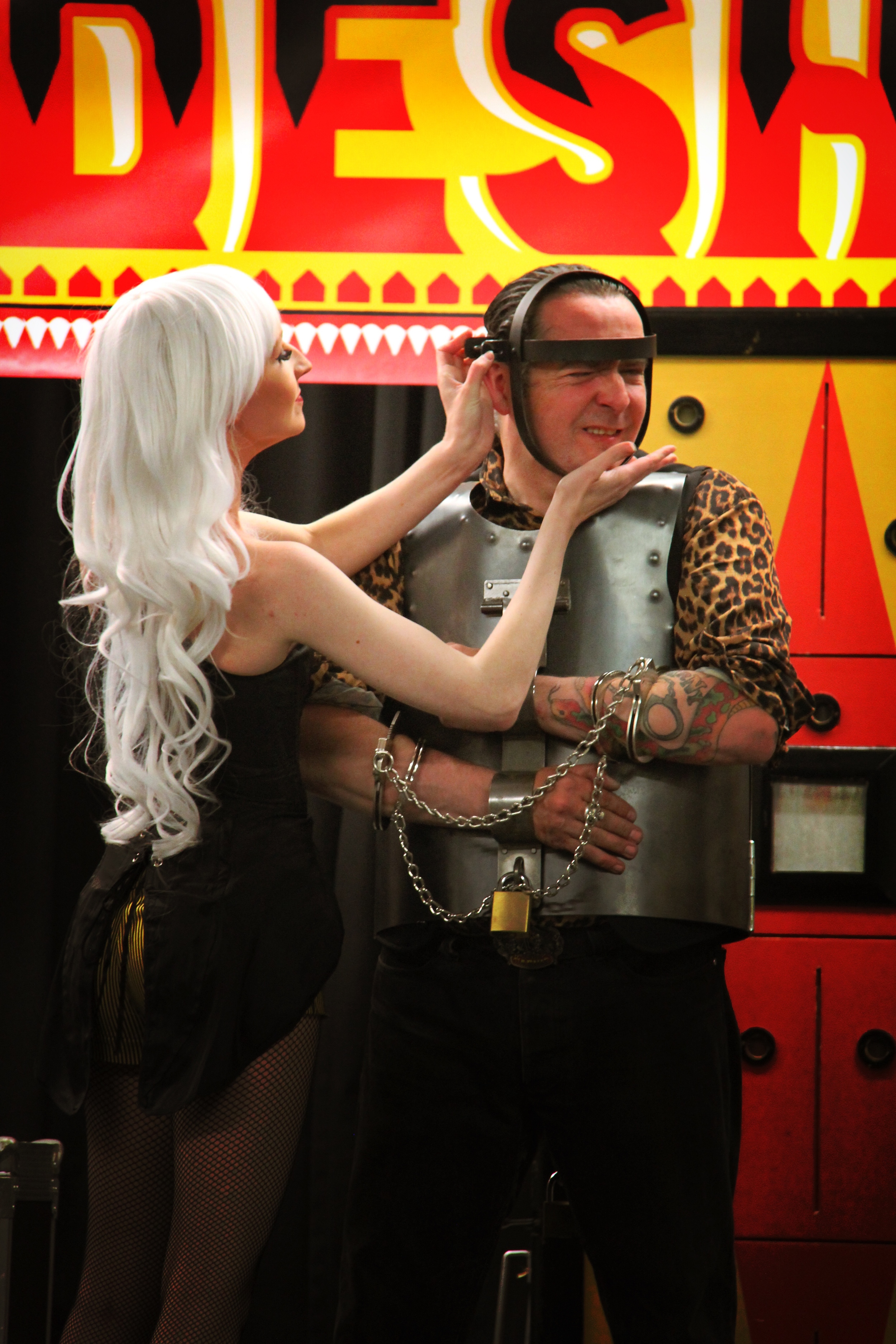
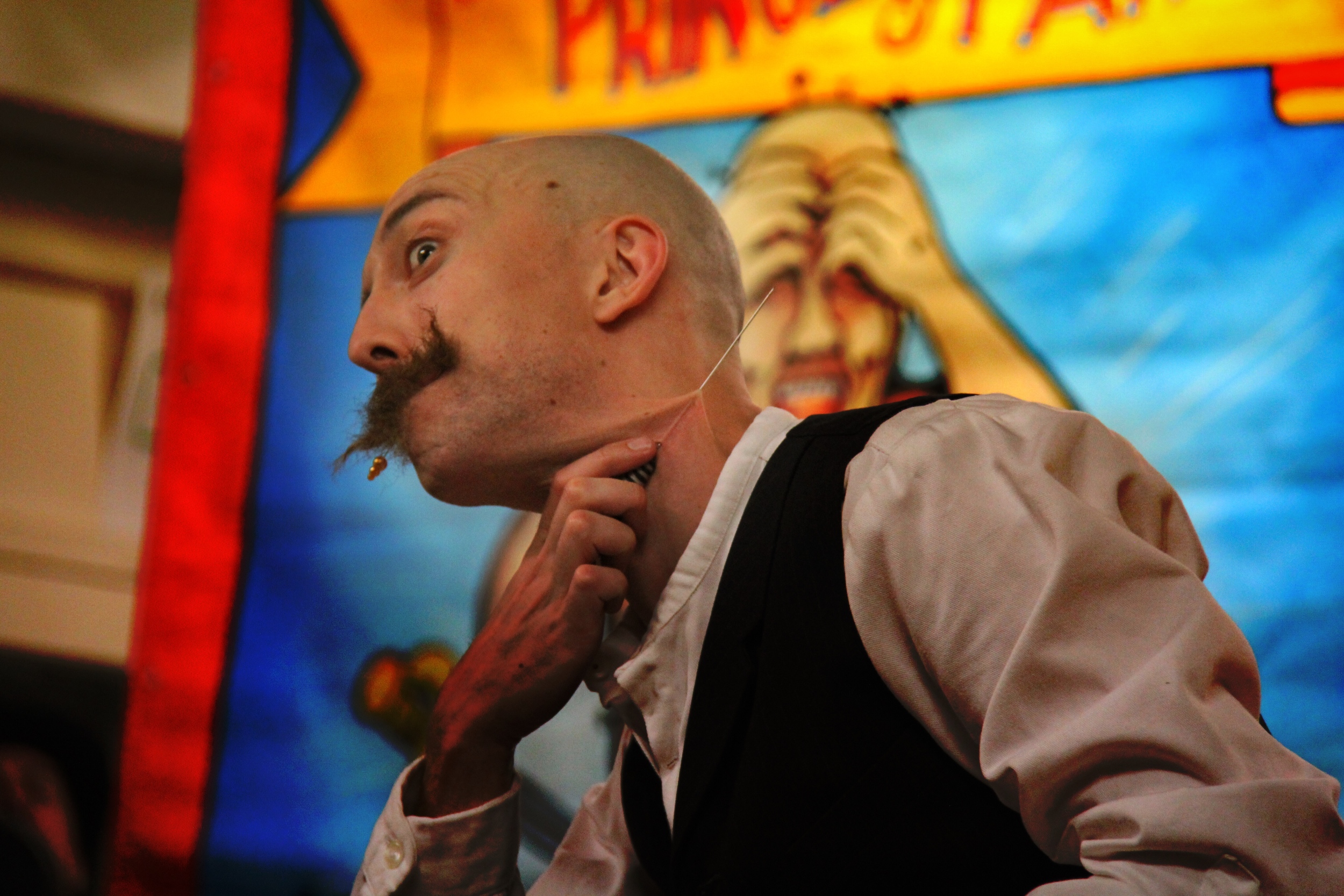
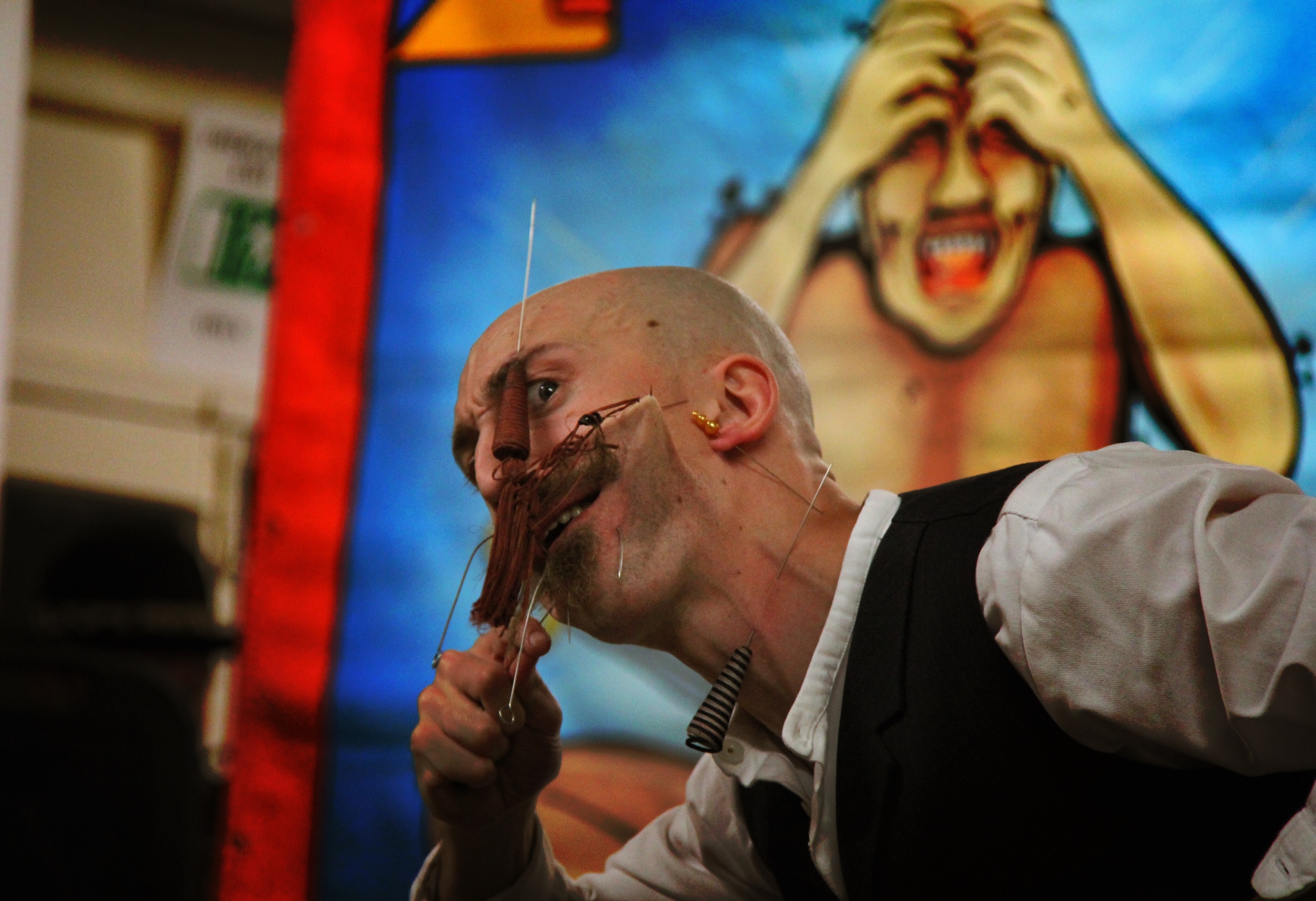
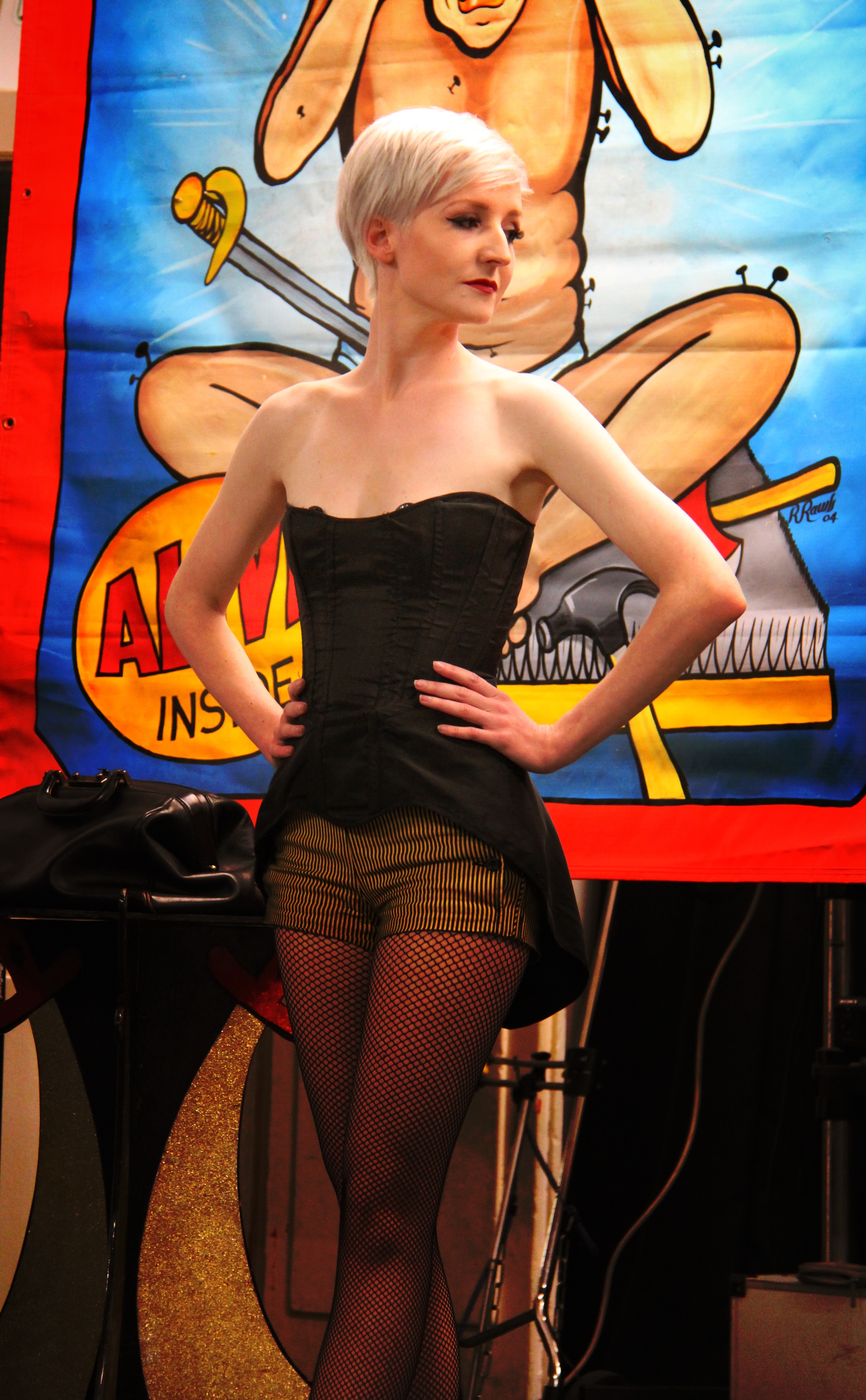
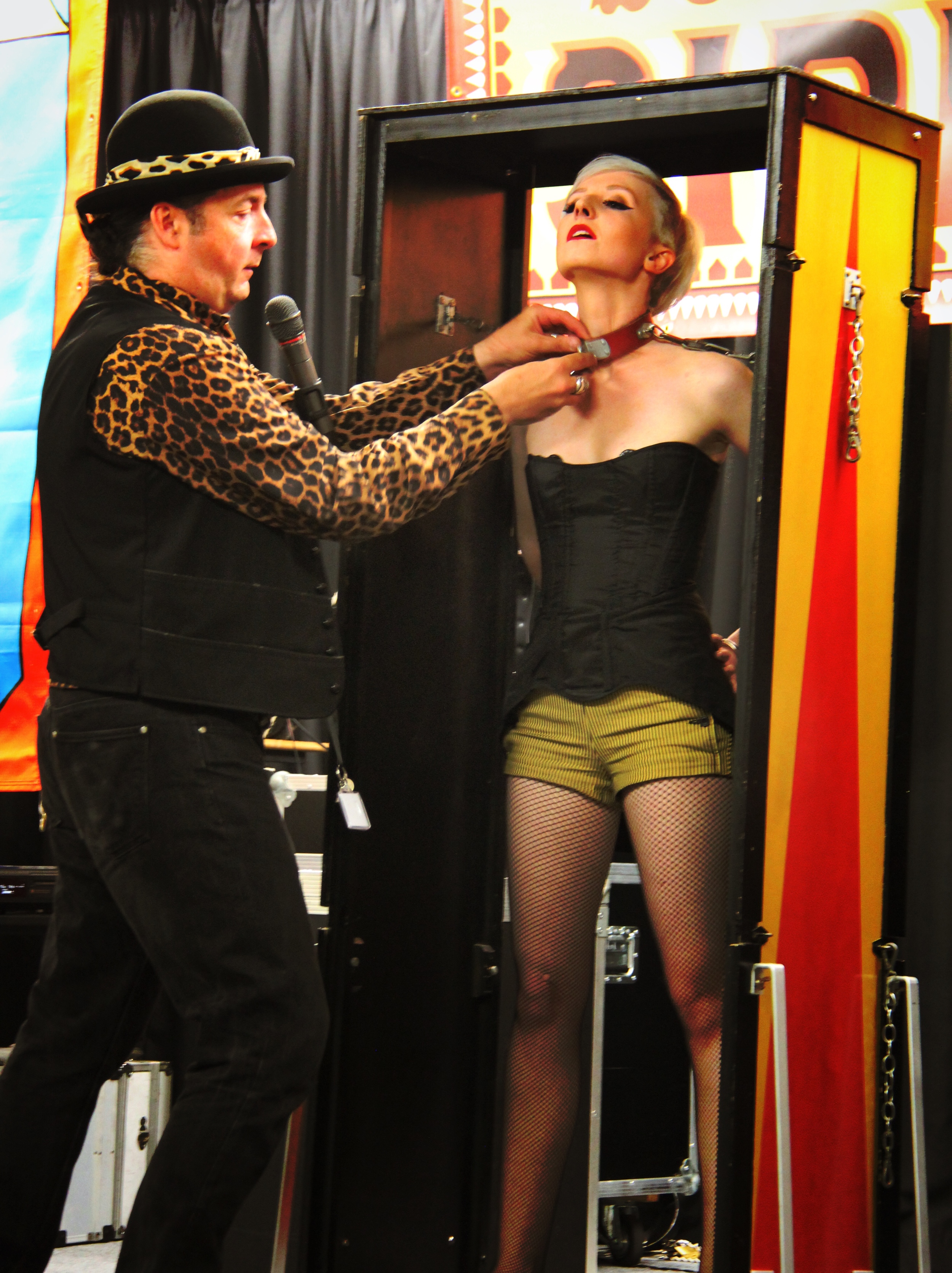

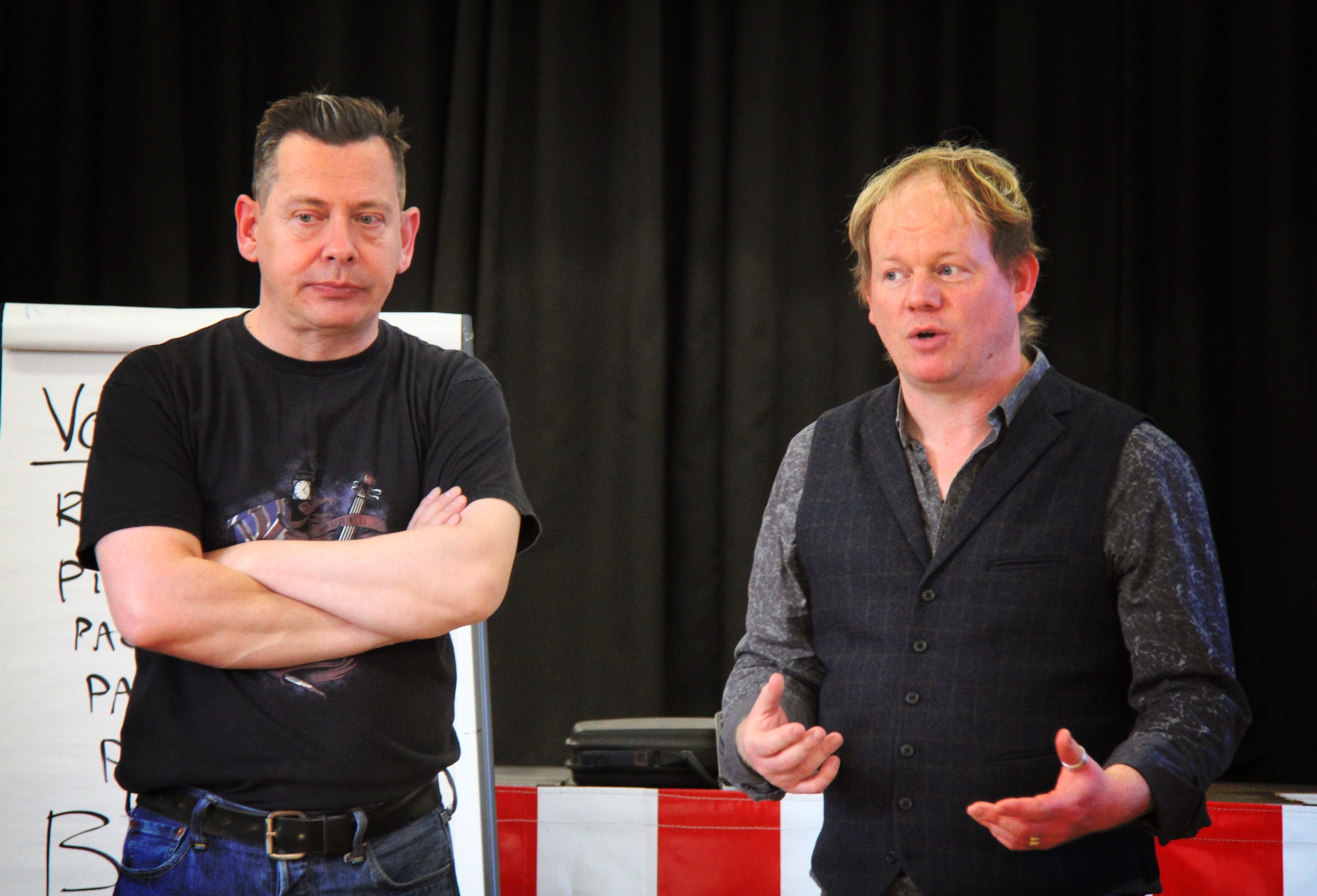
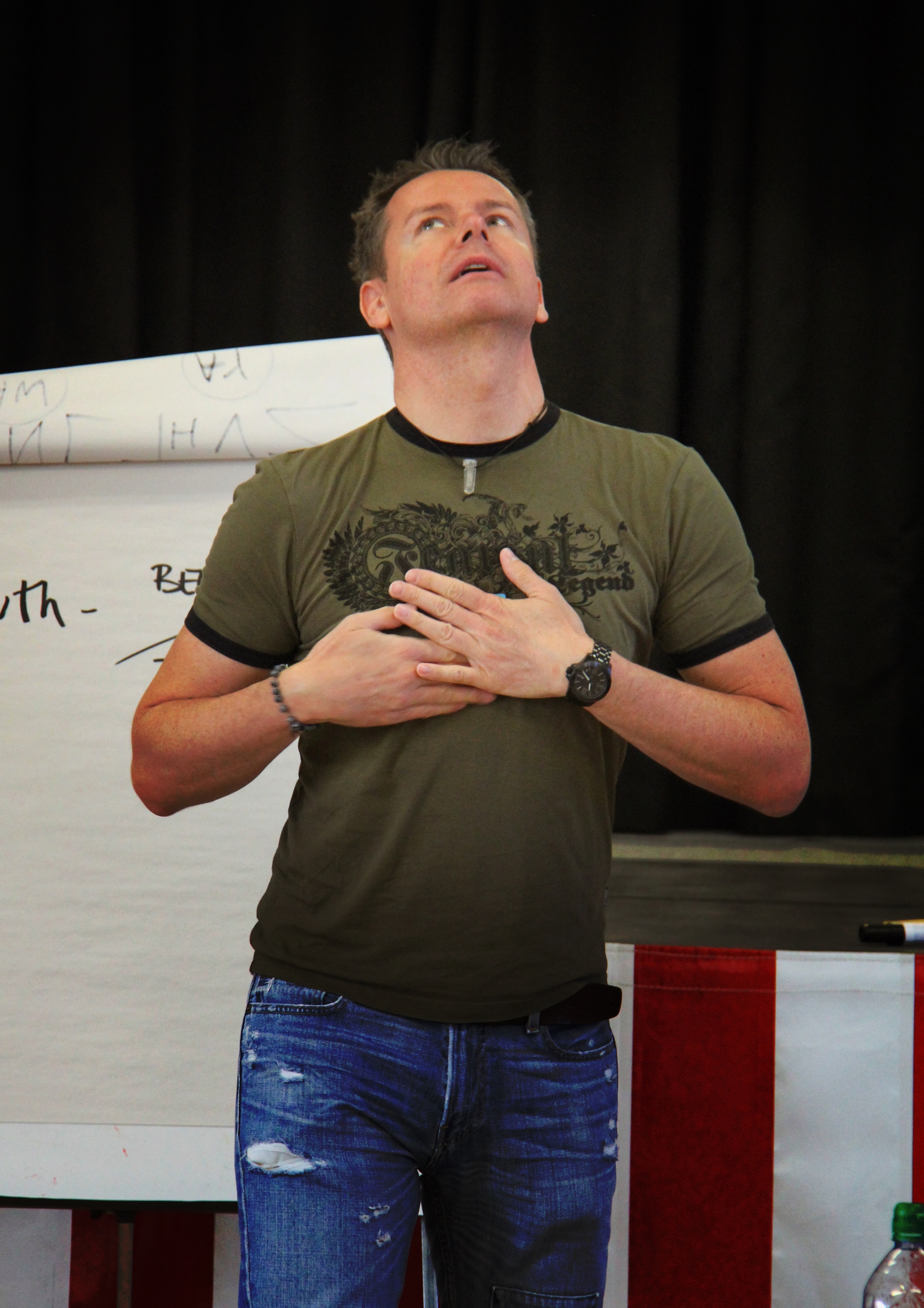
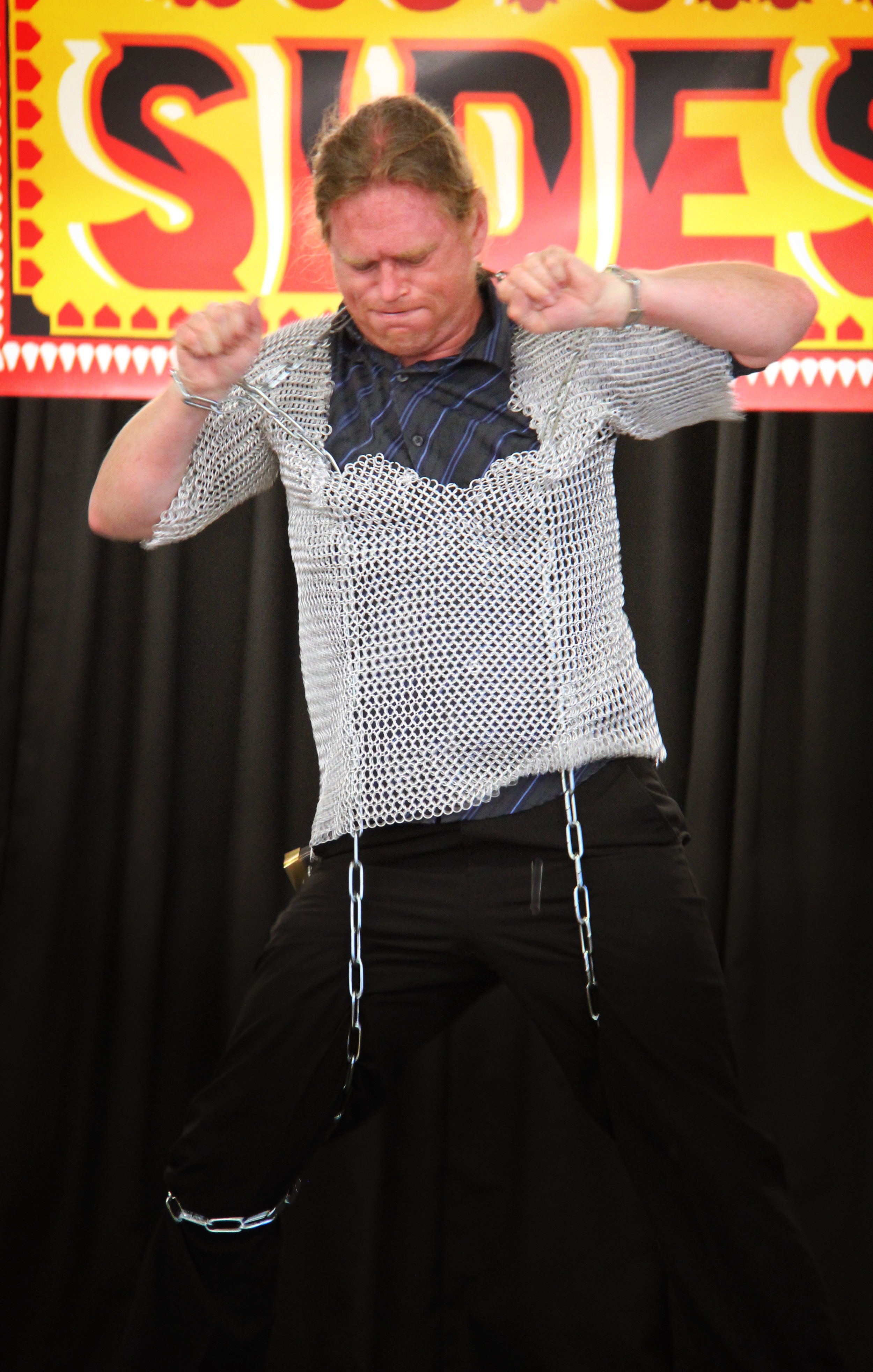
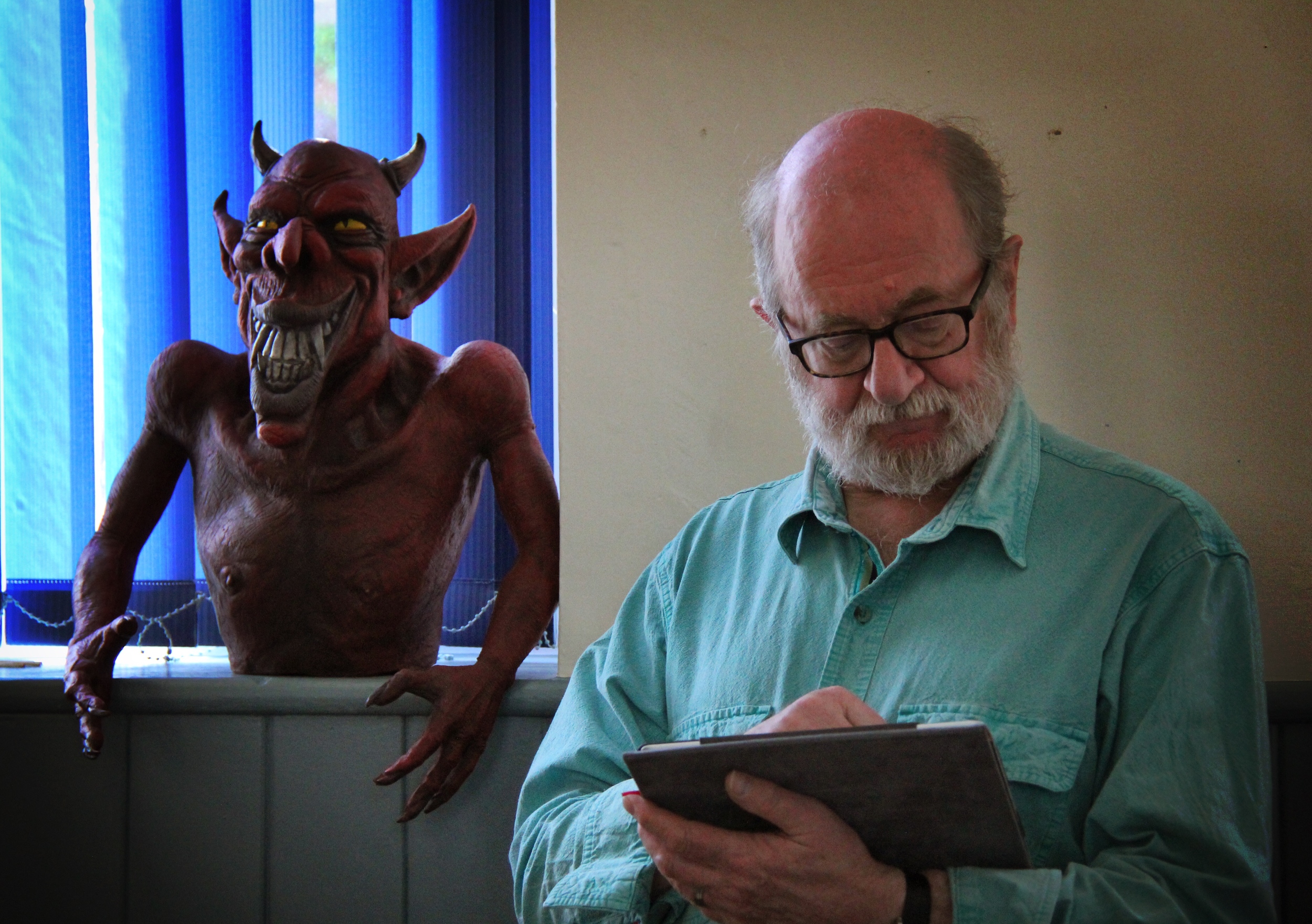
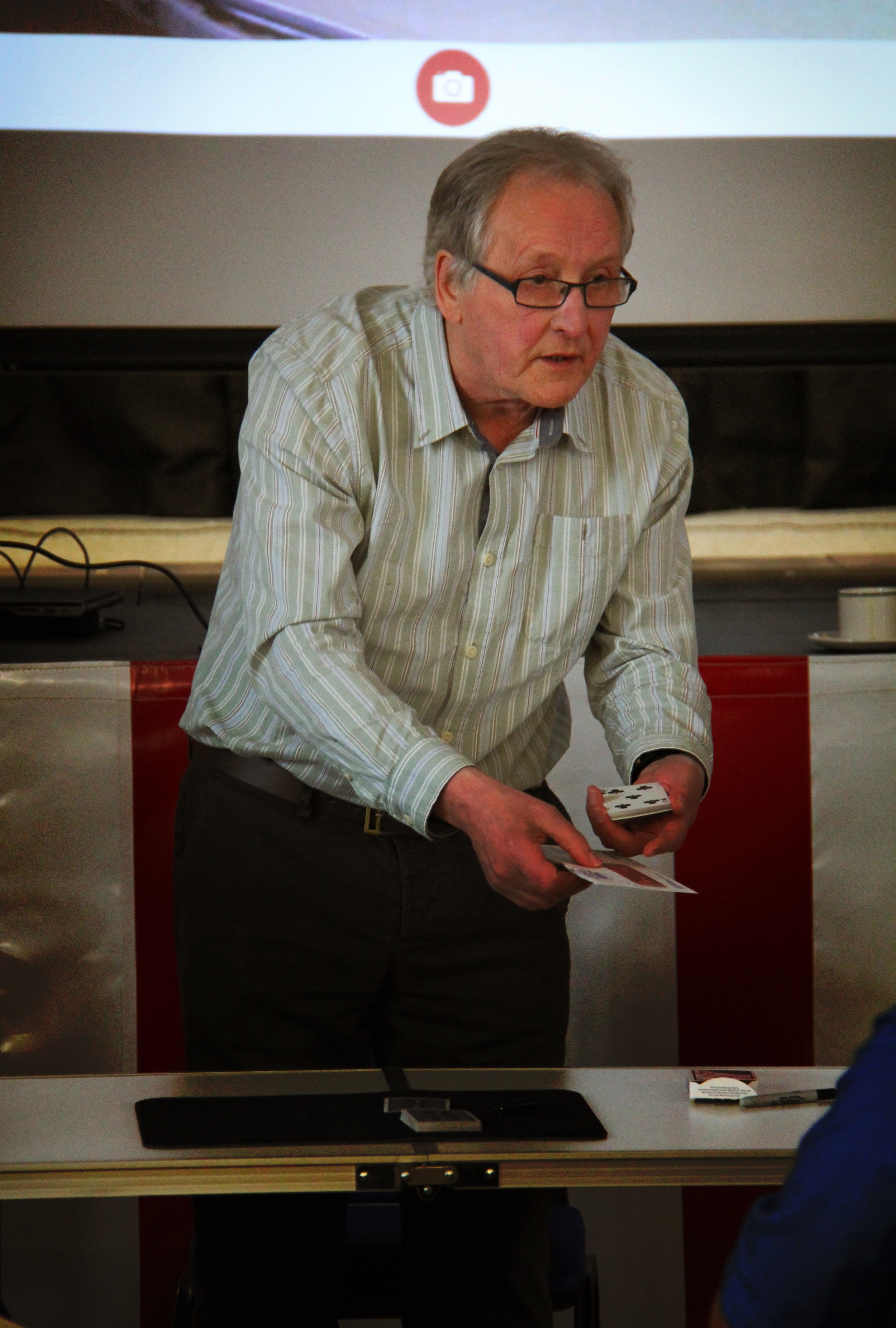

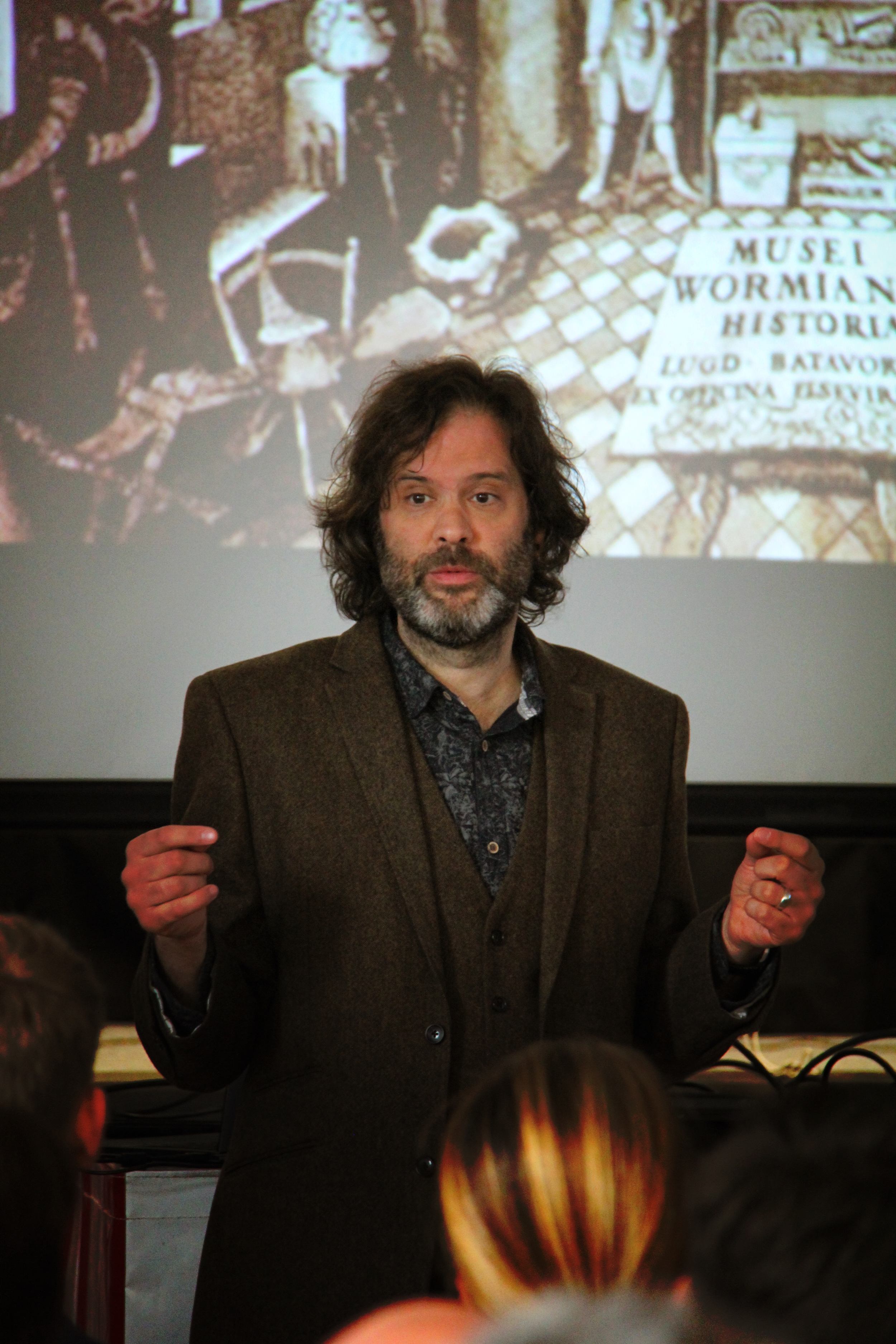
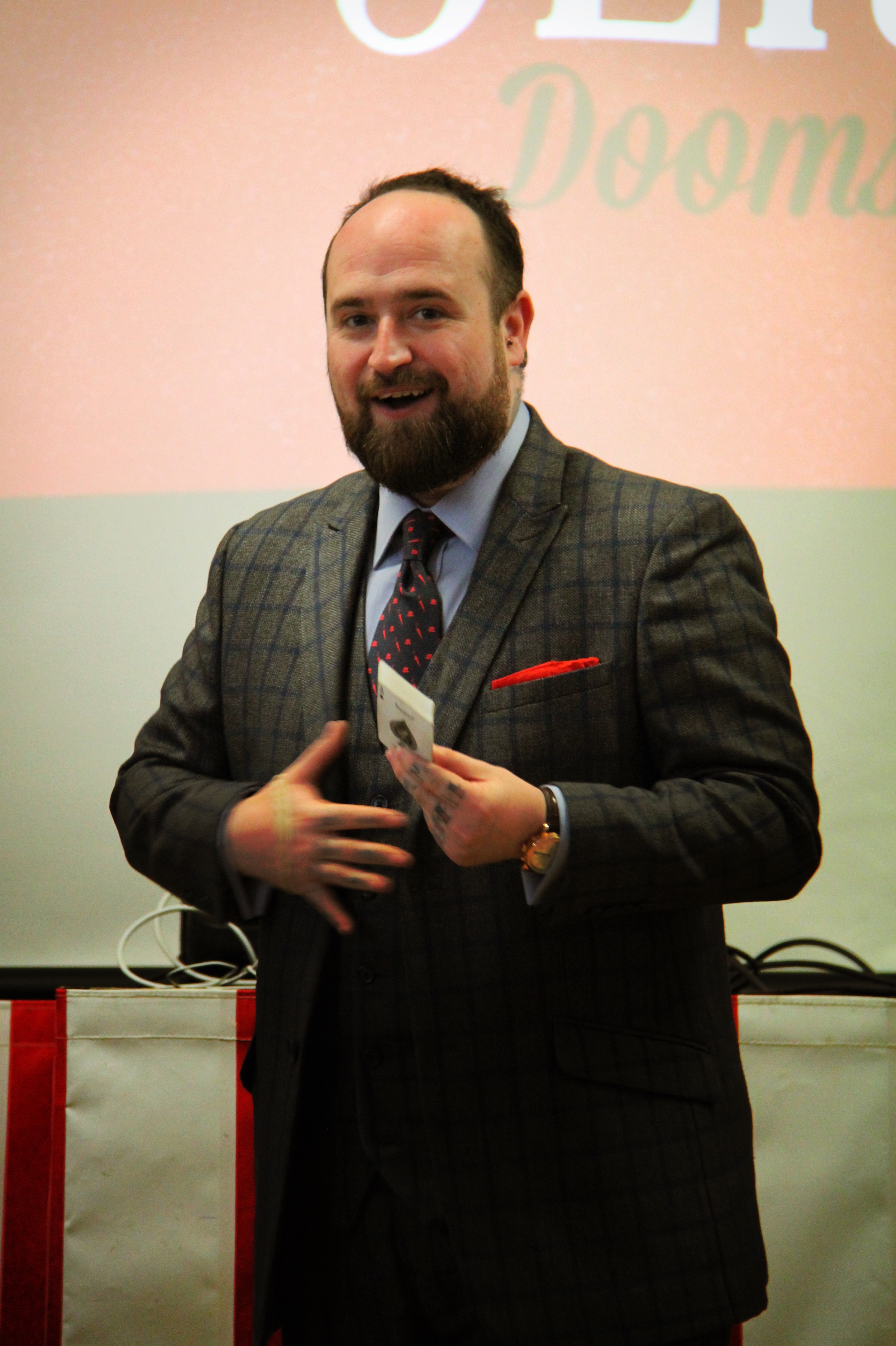

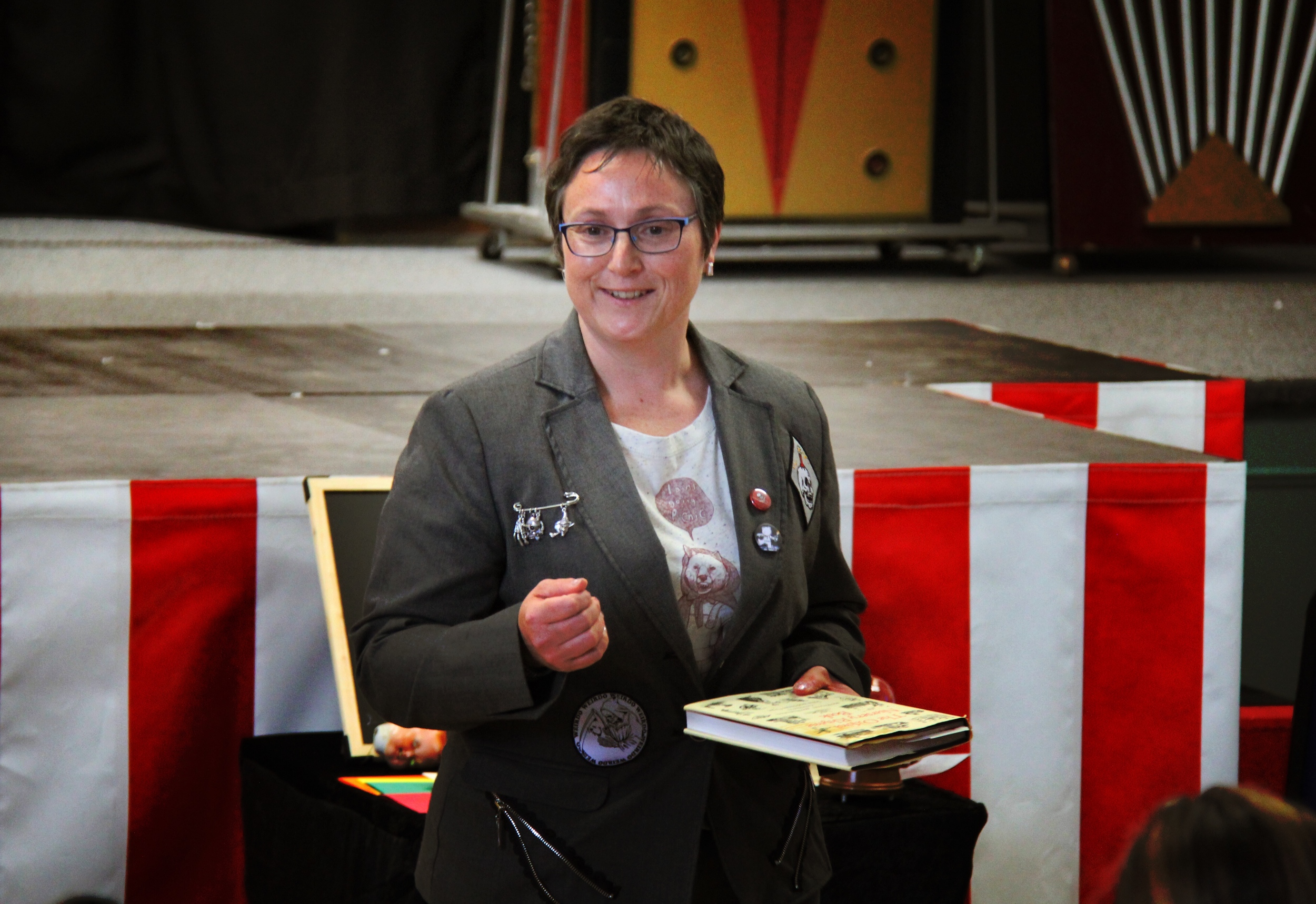
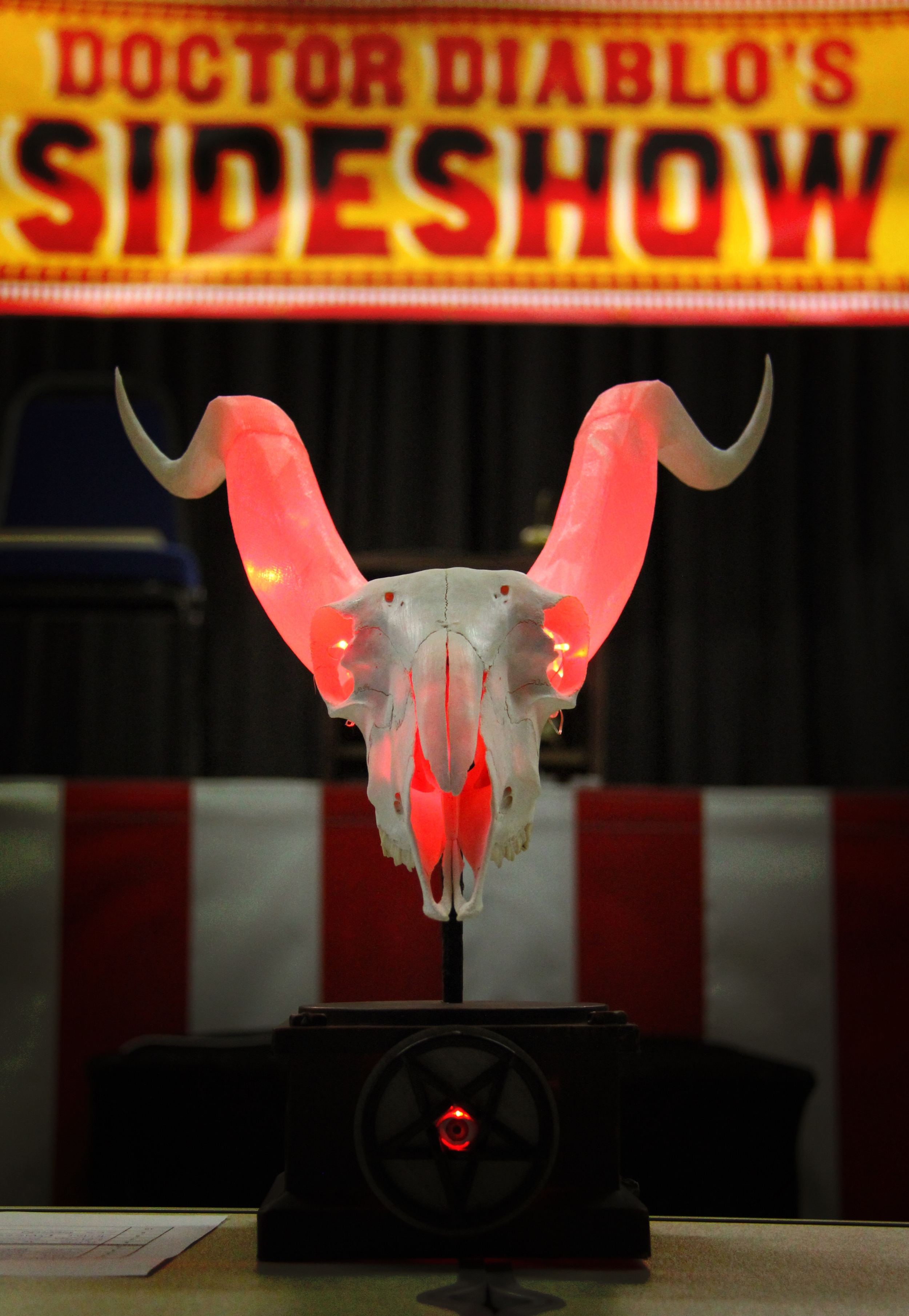
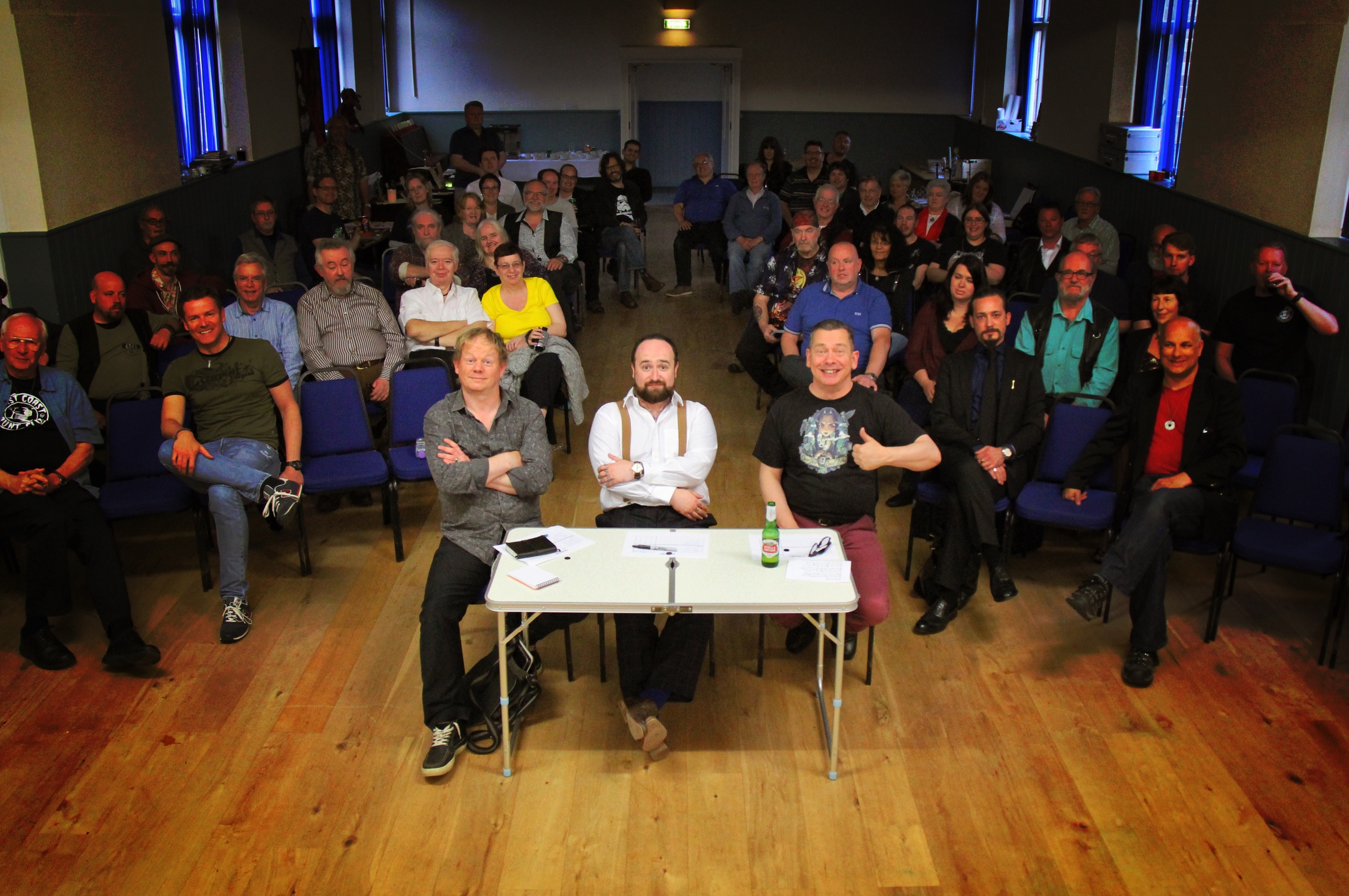

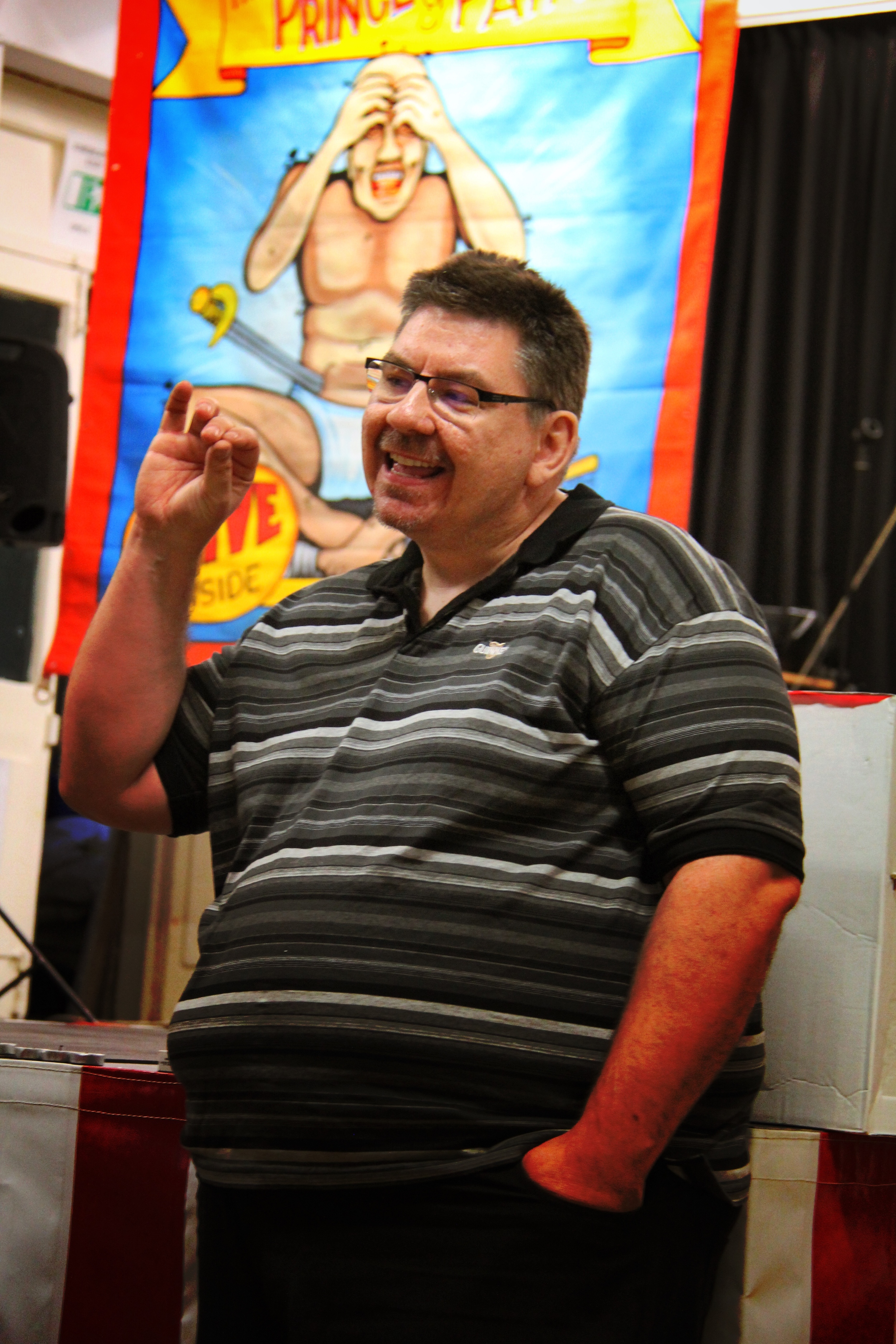
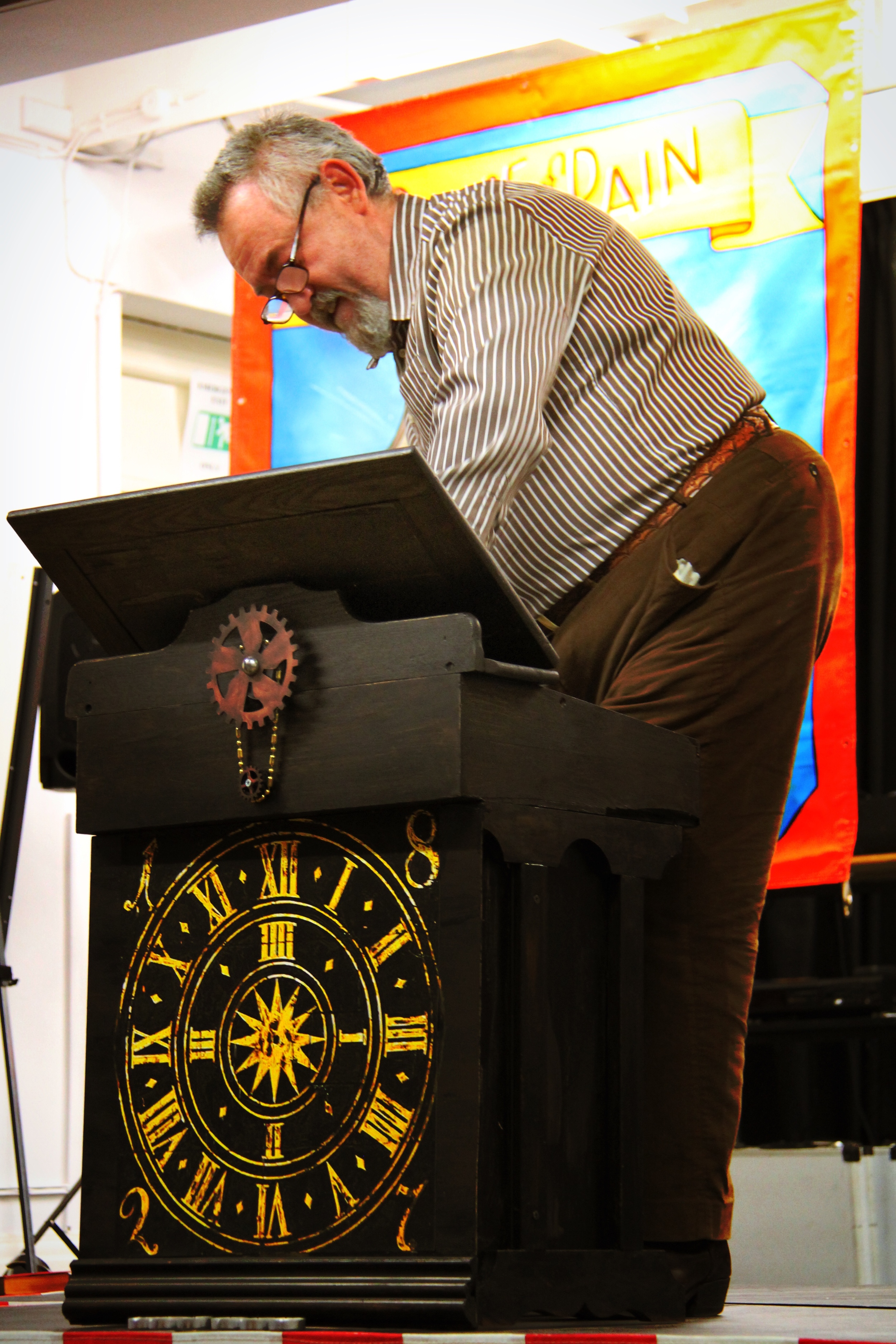
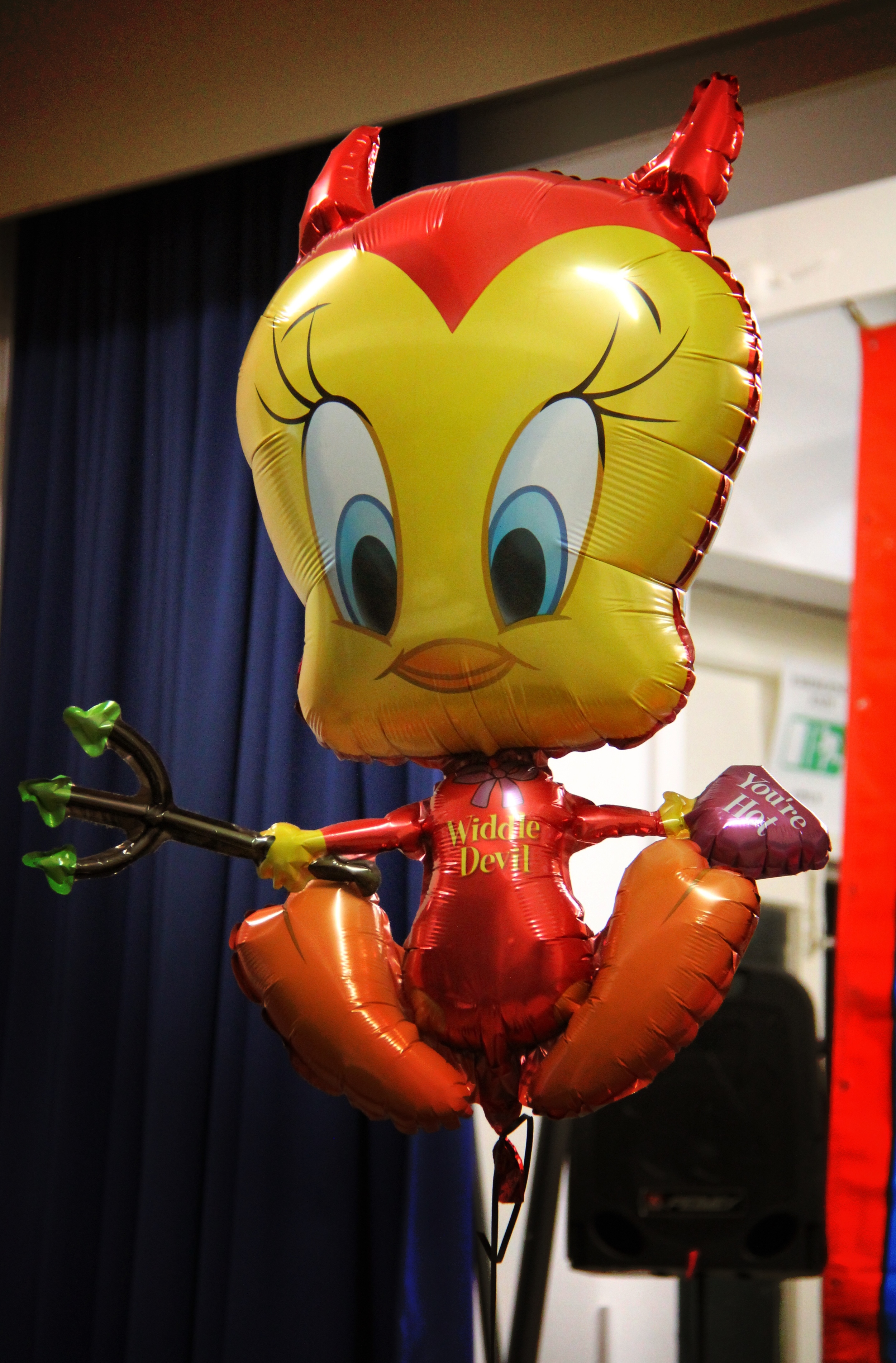
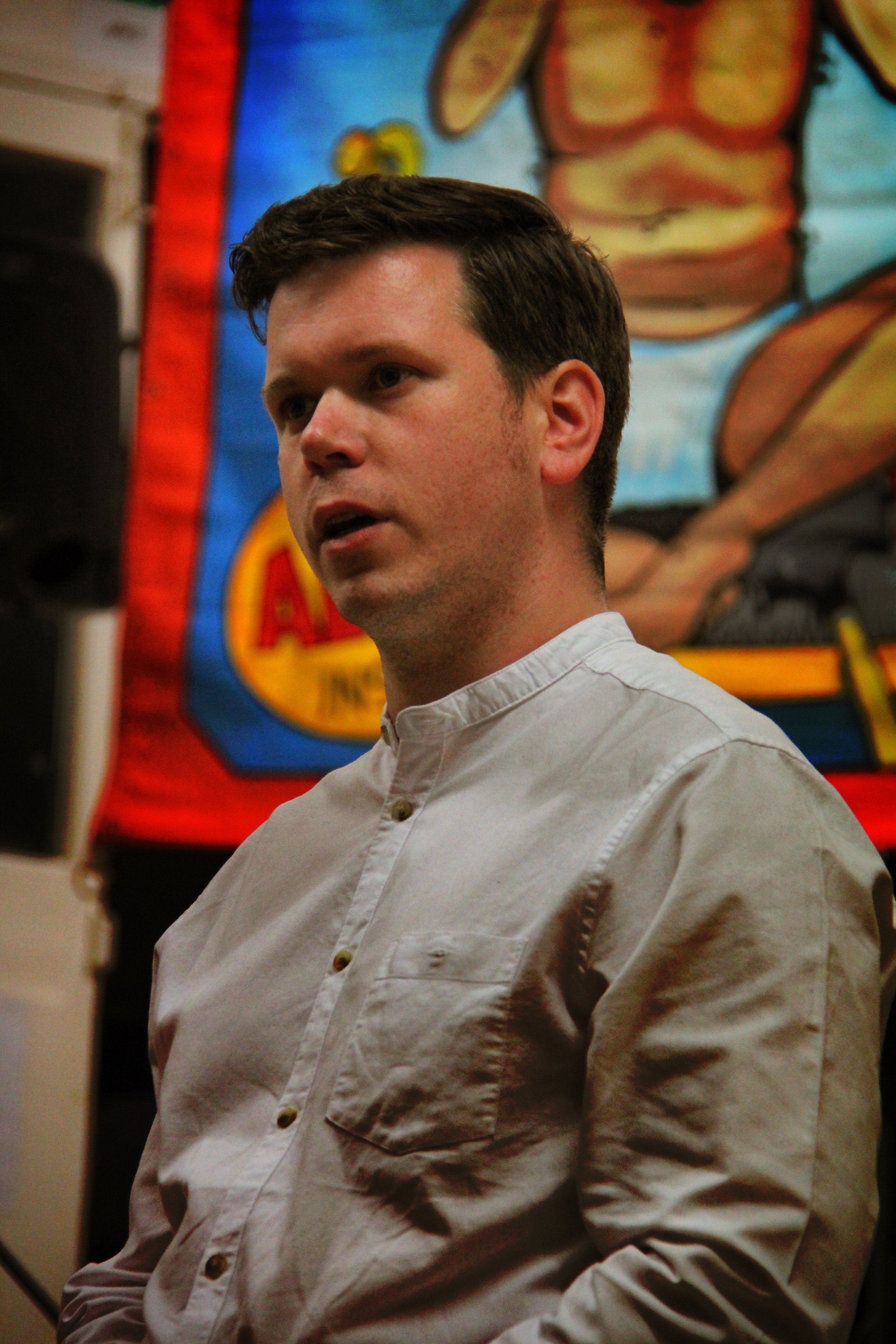
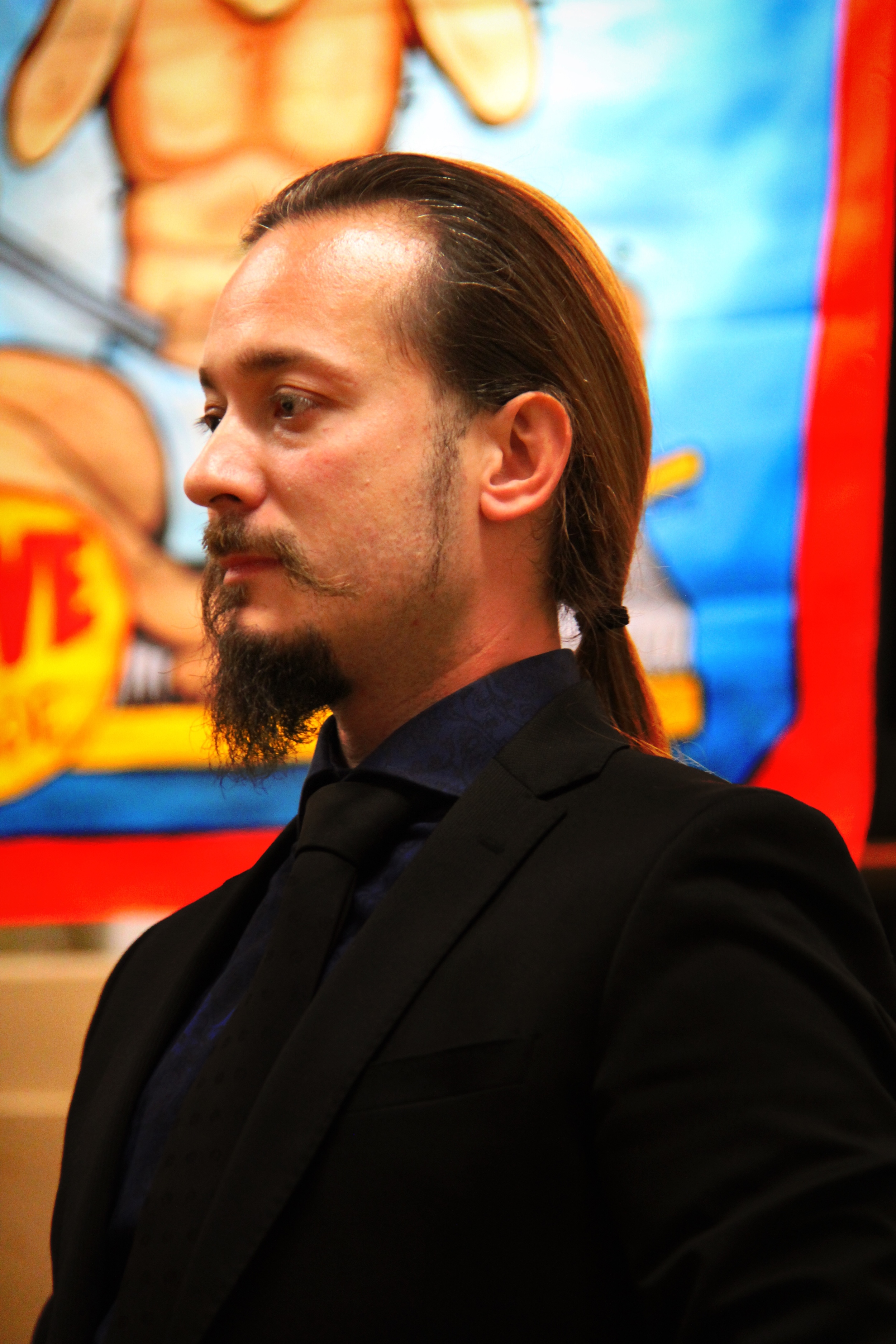
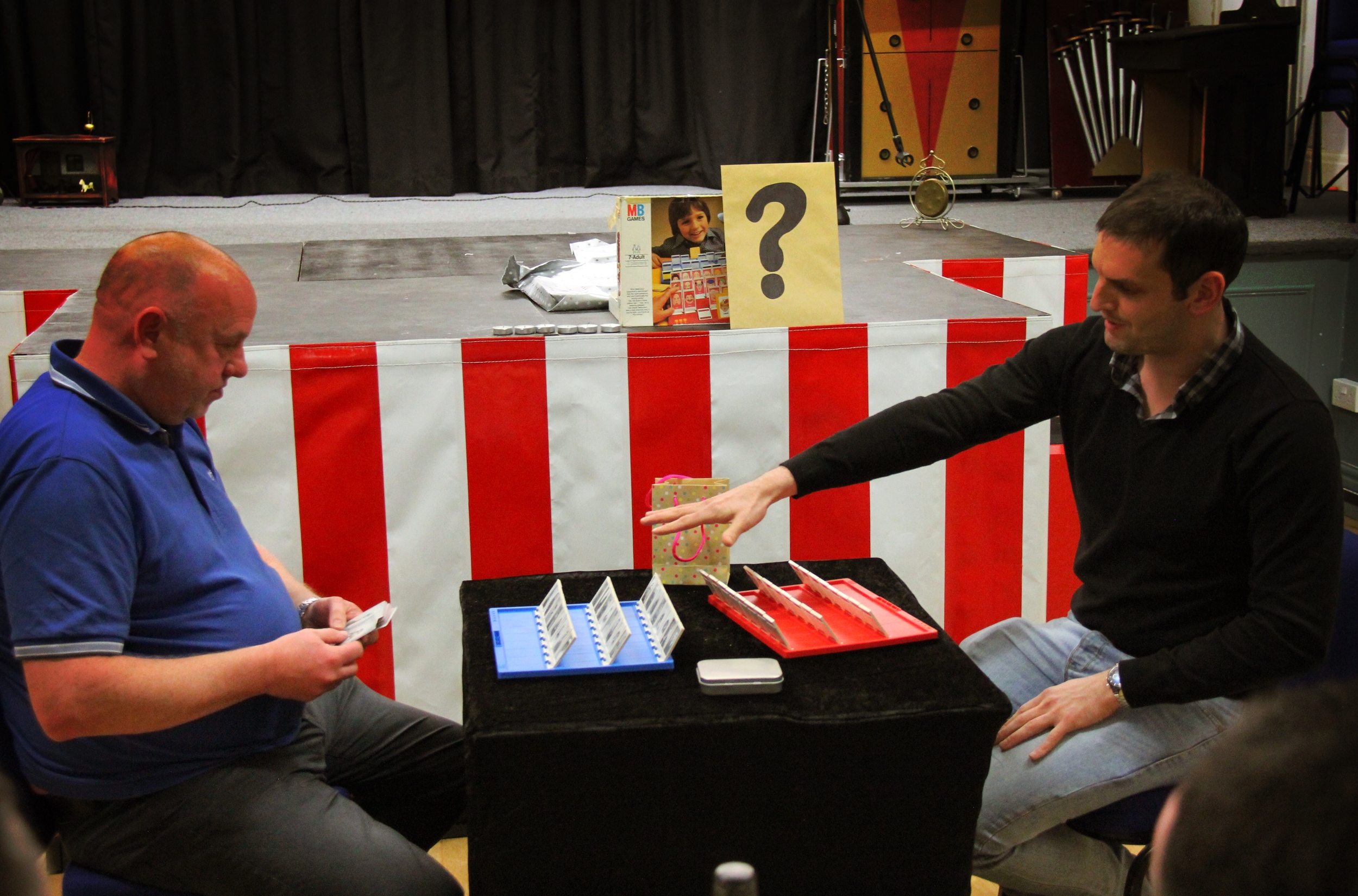
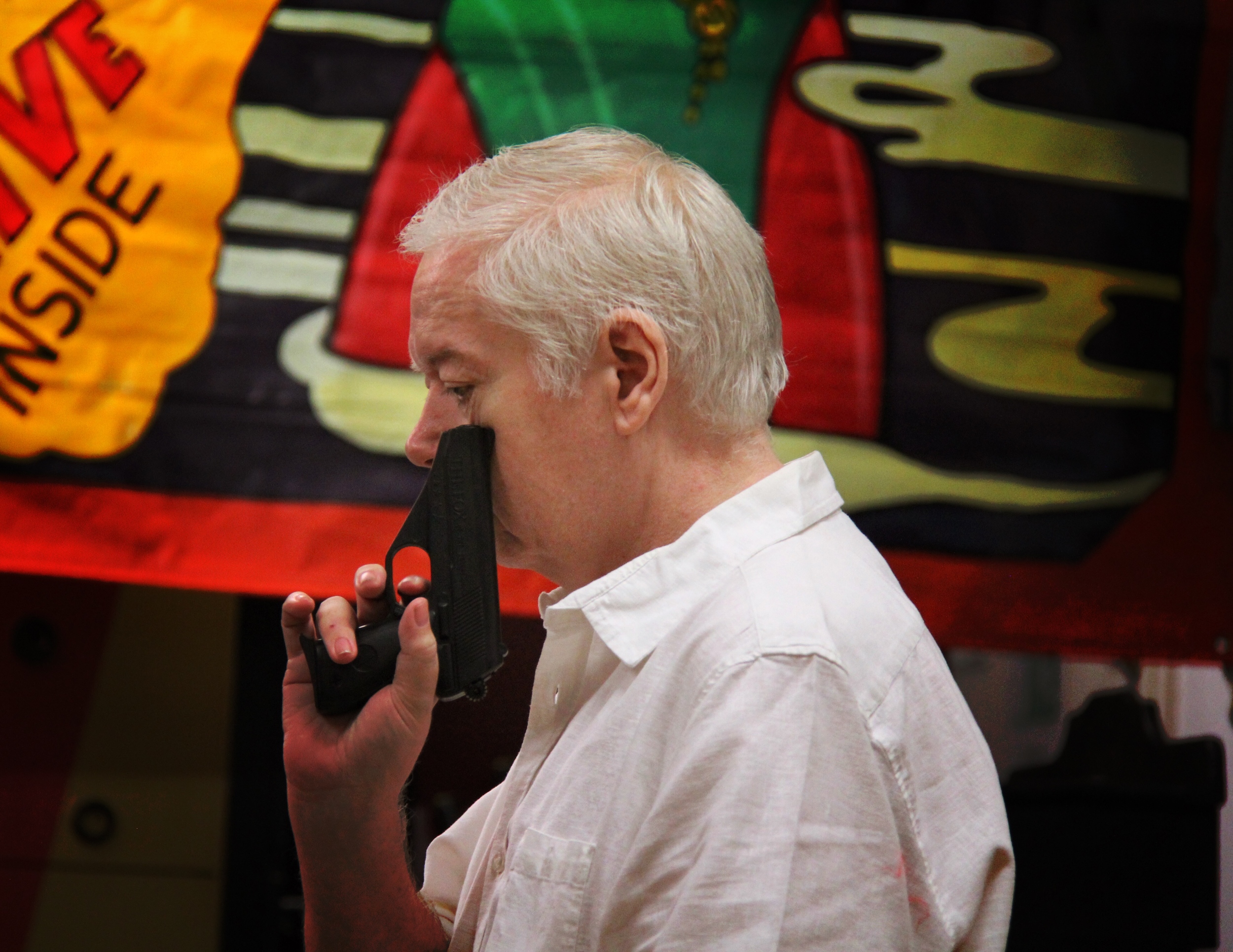
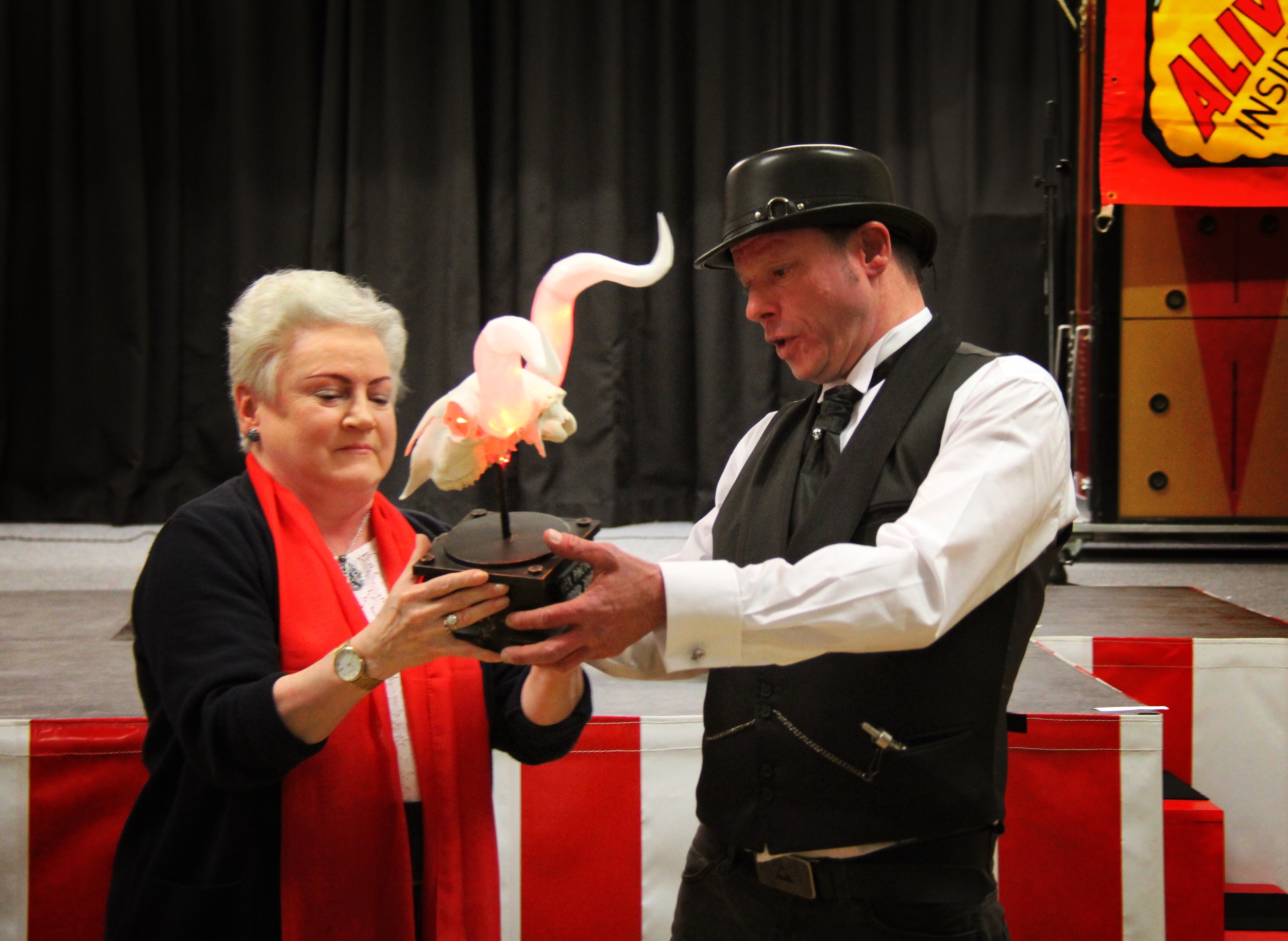
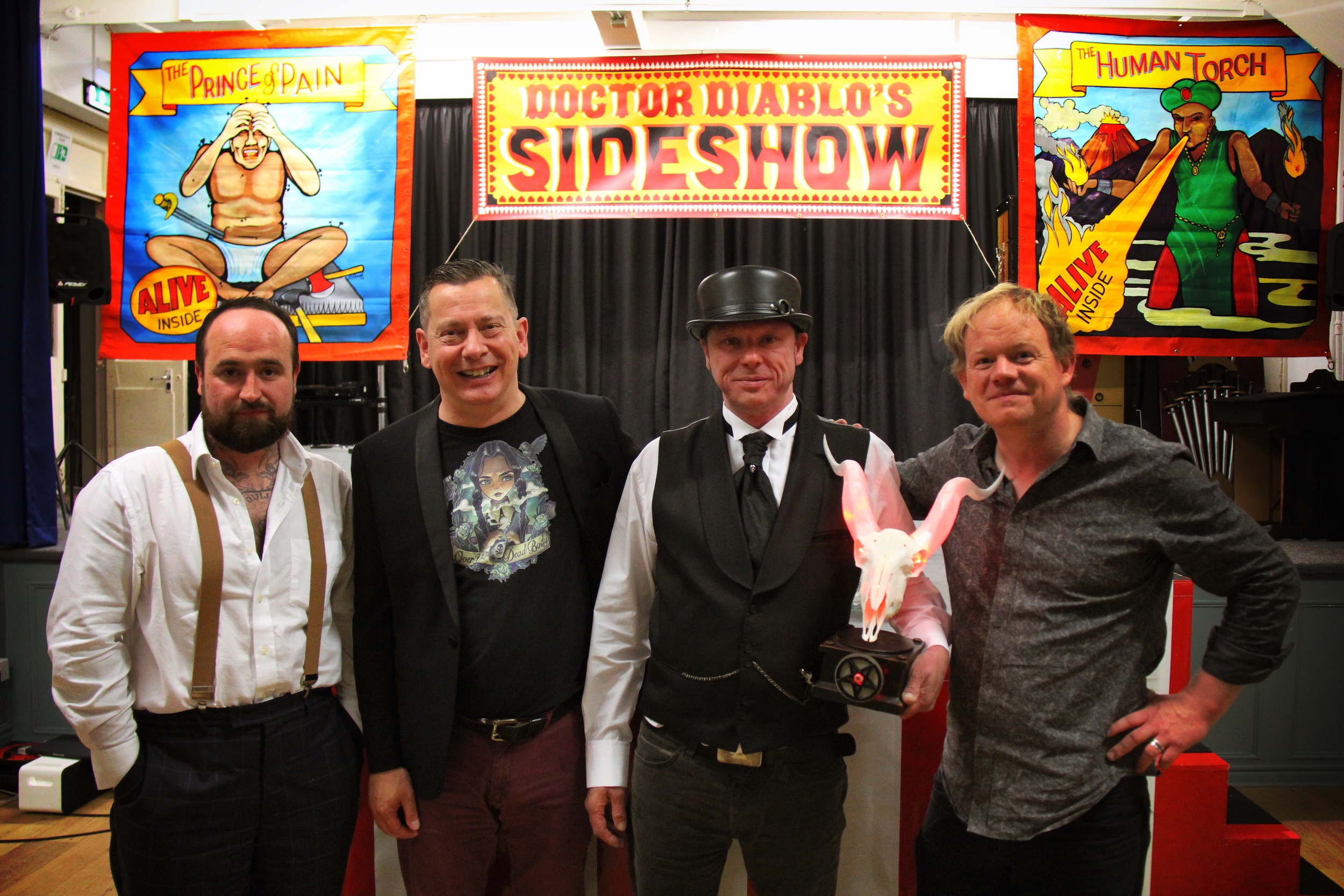
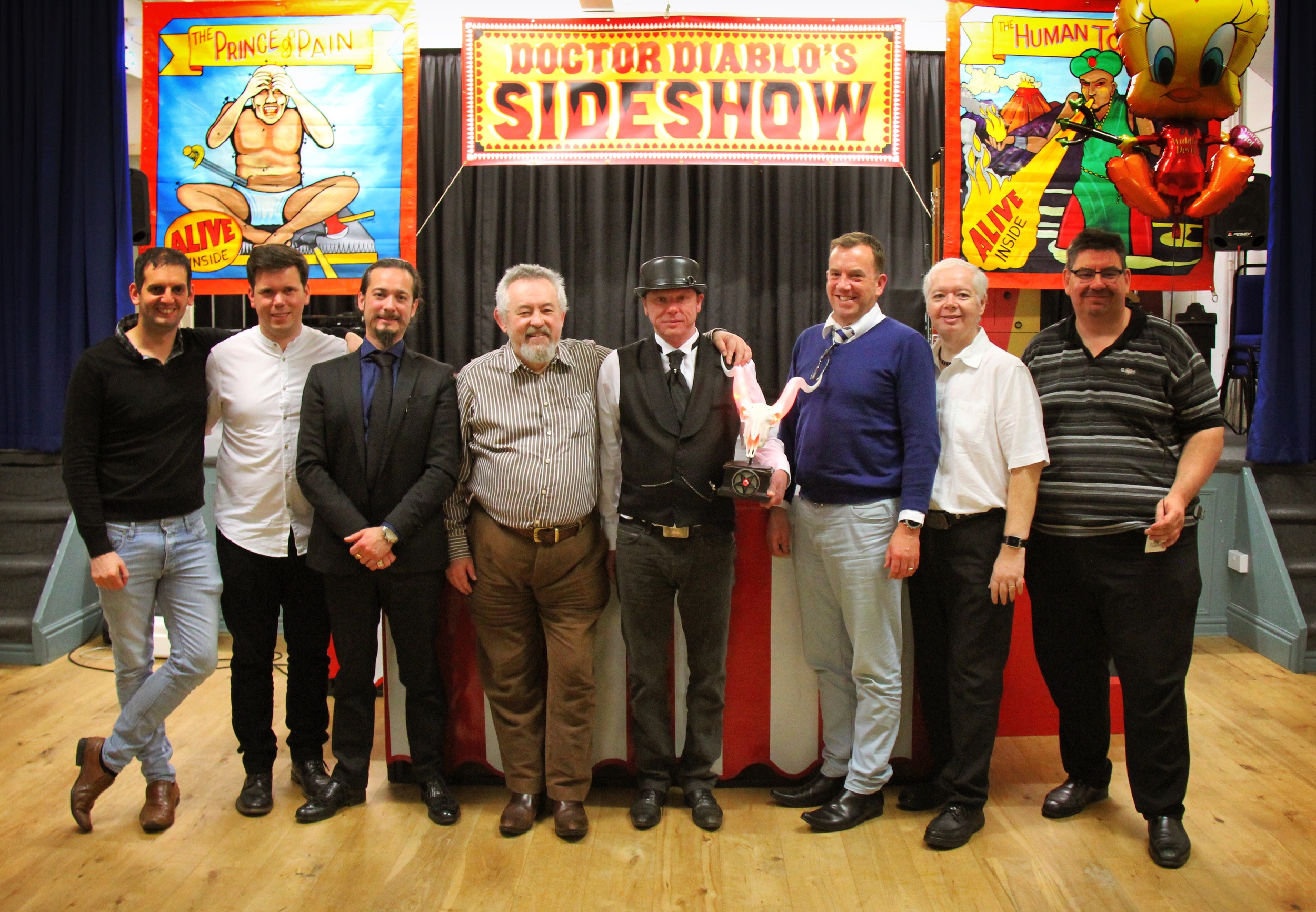
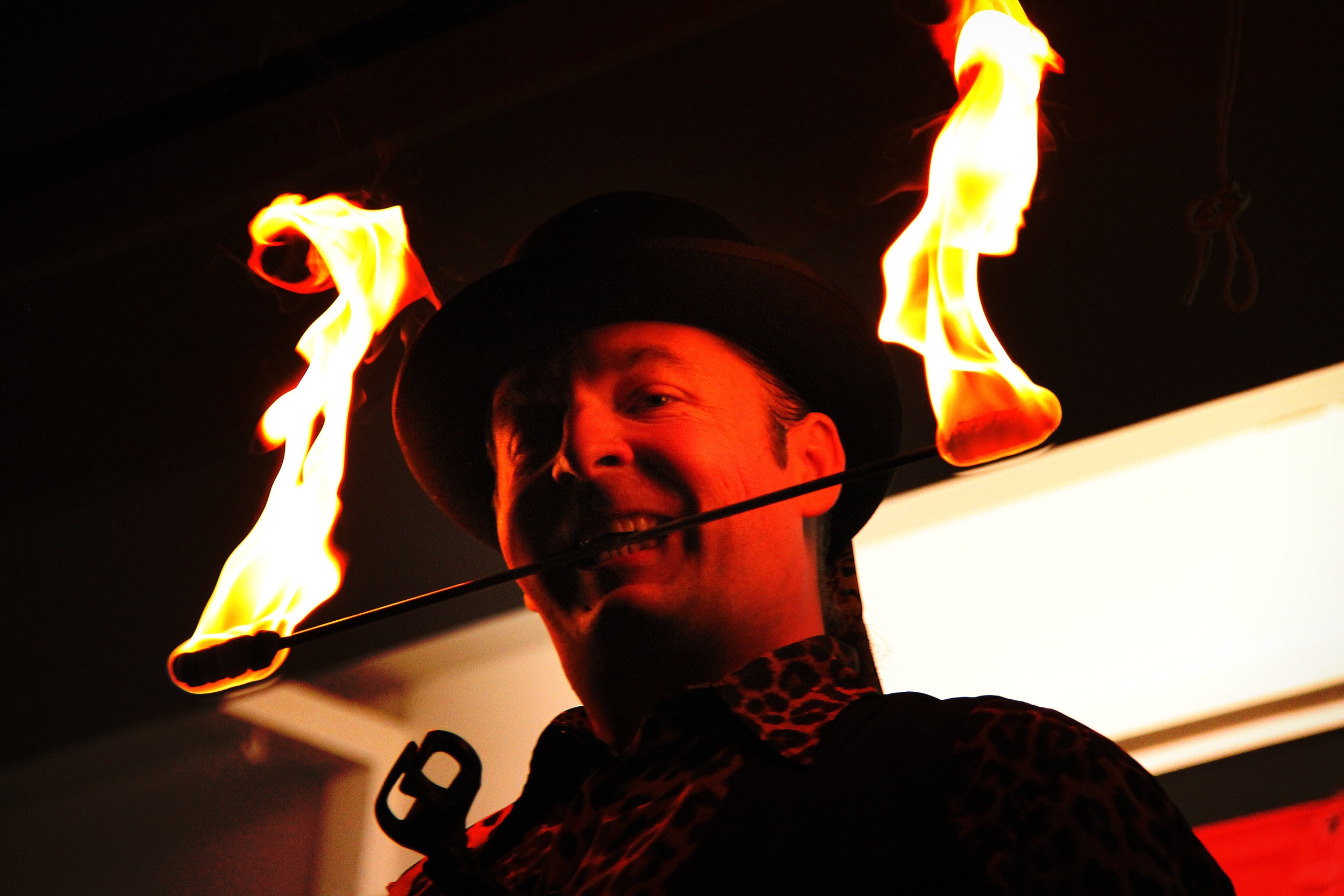
Fairies, witches, spirits and Shakespeare - a guide to the folklore of the Clydach Gorge
As my annual pilgrimage to The Legendary Llangolloen Fairy Festival fast approaches I thought it seemed fitting to include this great article by Claire Barrand taken from yesterday's Abergavenny Chronicle.
As someone who loves all things supernatural I was intent to discover what beautiful magical Wales, steeped in mystery and superstition has to offer in the way of local ghosts and folklore.
Walking my dog through the enchanting woods near my home in Maes Y Gwartha and along the path to Clydach Gorge, I imagine the trees whispering their secrets to me. Inspired to find out more, last week I met with official Welsh tourist guide Eifion Lloyd-Davies at Gellifelen tunnels for a guided tour through Clydach Gorge and sure enough he did not disappoint with his bygone tales of the mythical legends associated with the area.
The Gorge is an enchanting place, cutting deep through the rocks of the South Wales coalfield between Brynmawr and Gilwern and despite the current works on the A465 it is easy to lose yourself in its fairy-tale splendour.
Locals herald the story that Shakespeare himself so inspired by the mystical properties of the Gorge, wrote A Midsummer Night’s Dream here. Shakespeare in this, reflects the essence and beliefs of his era, and the superstition that dominated the widespread opinions in those times that the Gorge was the haunt of fairies, goblins and witches.
Wild and with nature in abundance, Britain’s oldest beech wood, which has survived some 14,000 years, hugs the side of the gorge forming the Cwm Clydach nature reserve. With over 400 species of fungi and rare plants birds and butterflies to be spotted here it is no wonder the site is protected for its inhabitants. Immense tracks of wild garlic leave a powerful scent in the air. There are 17 waterfalls, the most spectacular being the dramatic 60ft falls at Devil’s Bridge.
Devils Bridge is so named as the water has worn away a sinister image said to be the devils face himself into the rocks below. Legend has it that here in Cwm Pwca, a particular sort of goblin named “Pwca” existed. Mythological creatures, they were believed to have a menacing shapeshifting ability, usually beginning in the form of rabbits, horse, cat goat or dog but always black. Said to have the power to bring terrible fortune, people would be filled with dread if one crossed their path for fear that the “Pwca” would curse them.
As we strolled past the old railway station viewing ahead the lime kilns and beyond where it is said Peregrine falcons nest and certain trees grow here as only they can where the air is at its purest, Eifion related the story about some farm hands who were walking with their horse pulling a cart of straw one summers eve when it suddenly stopped and refused to walk another step. The men recalling an old lady walking past, and assuming she must have been a witch that had placed a curse on their horse, chased back after her cutting briar switches as they went, once finding her they viciously beat her until she bled, thus the horse was said to walk once again. The reason behind their brutality was the belief that a witch’s power could be released by drawing her blood by scratching her as quoted in Shakespeare, ‘Blood will I draw on thee, thou art a witch’.
Witches, were thought to brew evil concoctions in their cauldrons and here in the Gorge there were no shortage of the gwiddonod (witches) depicted as wicked old women who could cast curses over people and animals, ride broomsticks, tell fortunes and use charms to both heal and cause diseases.
Another Clydach witch was said to be that of Old Magw. A teacher employed at the Ironworks school in Clydach by the manager Edward Frere, Old Magw was reputed to be a vicious wicked woman with merciless means of dealing out the most severe punishments to children who were late for school or defiant. Widely feared by local folk she was reputed to curse your plants in the garden if you maddened her.
Another teacher reputedly a harsh tyrant at the ironworks school was a man called John Dawson who was reputed to have three pets that he kept close by his side - a black jackdaw, a cat and a welsh terrier. Disliked by many Dawson would walk daily from home and back to work across the mountain from Twyn Wenallt and one day, he just vanished.
Assumed that he had drowned in a nearby pond, locals in search of his body recovered a sack from the water with the three pets drowned inside, however he was never seen again. The apparition of a figure wearing “old fashioned clothing” and a hat that “dated back to the Seventeenth Century”, has been reported high up on Gilwern Hill near the old quarry pits, known locally as the Tyla. Could this be the ghost of John Dawson?
There is another story of a witch located in Clydach and her name was Molly Davies. Little is known about Old Molly but it is reputed that she had the power to make pigs stand on their heads!
Eifion explained to me that there was widespread belief that at certain times of the year folk witches met at midnight to steal and ride horses belonging to local people and stories of the animals being discovered perspiring and distressed in the morning were proof that witches had been riding them.
General belief was that branches from Elder or Mountain Ash trees woven around stable doors it would deter the witches and Elder was grown commonly in Wales at the entrance of farms to stop witches entering can found growing there to this can.
Elder has many associations with the fairy world in Celtic lands and there is also much natural magic associated with powers of Ash. The witch’s broom was traditionally made of an Ash staff, together with Birch twigs and Willow bindings.
People would customarily only cut elder branches with the permission of the tree and would first doff their caps to the tree and say, ‘Old Woman, give me some of thy wood and I will give thee some of mine when I grow into a tree’.
If this procedure was not adopted, ill-luck could befall. In some Welsh traditions, witches were even said to live inside Ash trees. The Ash tree has always been given mystical import and character, frequently being associated with healing and enchantment. In Celtic literature, there are many references to the Ash tree, but in particular it is associated with the Welsh Magician-God Gwyddion, who bears an Ash staff/wand, a symbol.
Amongst other magical healing powers that the Gorge held precious was the belief that hernias could be cured by splitting an ash tree and passing the afflicted person through the gap three times to make their hernia disappear. Children suffered a lot with hernias due to the heavy work they were subjected to at the ironworks and this practise would have been a regular event!
Over on the opposite side of the valley towards it is said that a wise man called Solomon lived. (below another fort named Tom Thumb’s Rock or King Arthur’s Chair). He was said to be able to cure animals, and as one farmer crossed the valley in desperation one day to find Solomon to tend his animal he found him already en-route to his farm as he also had the ability to see the future.
As we approached one of the earliest chapels in the area, Nazareth chapel (known as Cuckoo chapel) now privately owned, Eifion pointed out behind it on the mountain top stands Dynas rock – an iron age fort.
A spectral black dog ghost has been witnessed by many people following them down the hill from here. In Welsh folklore, the black dog is usually a night-time apparition, often said to be associated with the Devil or a Hellhound (Cwn Annwn). Its appearance was regarded as a warning of death. It is described to be larger than a normal dog, and often has large, glowing eyes. Black dogs are almost universally regarded as malevolent. The hounds of hell were said to be a pack of ghostly hounds lead out at night by the King of the Otherworld to hunt the souls of the damned. According to Welsh folklore, their growling is loudest when they are at a distance, and as they draw nearer, it grows softer and softer. In legend the hounds are sometimes accompanied by a fearsome hag called Mallt-y-Nos, "Matilda of the Night". Mallt-y-Nos drives the hounds onward with shrieks and wails, which some say are evil and malicious in nature. Apparently once a beautiful but wicked Norman aristocrat who loved hunting so much that she said, "If there is no hunting in heaven, I would rather not go!" She is said to have regretted making this wish, and now cries out in despair as she hunts forever in the night sky. It is not known if she has been seen in this area but no wonder the sighting of the black dog on more than one occasion would fill the locals with fear.
In Llanelli Church yard the ghost of Colonel Sanderson’s white dog was often seen. After his death and burial here, the dog was often pining at his master’s graveside, and so they placed a statue of the dog on the grave after his death. Shadows of the dog have been seen by passers-by at night and poachers coming down from the mountain would report their dog’s hackles going up and refusing to pass the grave yard.
Ghosts not surprisingly are a common feature of Clydach, and another mischievous spirit said to regularly haunt the area, came to take gates off the hinges at certain nights of the year! Spookily the phantom of a headless horseman has also been sighted many times galloping across Smart bridge.
Of course my story would not be complete without mentioning The Lonely Shepherd. As a teenager I had the perfect view from my home on Station Road in Gilwern and I would gape at the rock on the opposite mountain in awe of this legend.
According to local myth, a farmer at Ty-lsaf farm was so cruel to his wife that she threw herself into the River Usk and drowned. For his sin, the husband was turned into a pillar of stone (Lonely Shepherd), but every year on Midsummer’s Eve, he is granted the ability to go down to the banks of the Usk to search for his wife, calling her name - in vain. By next morning he has always returned to his lonely place. It was a local custom to white-wash the stone so that it could easily be seen when it walked on Midsummer’s Eve.
I am certain the Ironworks in Clydach (pictured) must also boast numerous ghosts of employees disfigured or killed here in their duty as the Frere family hired 1350 workers, many of them only children who would have worked here and died at a young age in the 1800s. Now a place of heritage it remains an impressive relic of long-gone times, but I wonder if the spirits and souls that lived and died are still amid us and how many more accounts would they tell if they could?
Legends and folklores provide a greater and deeper insight to life and living, as even despite the various accounts we may hear and the parallels to other folk tales, they are quite simply the legacy left to us by our resident ancestors as a connection to the beliefs, common values and morals that they held as demonstrated in these compelling stories.
For tales such as these to have been passed down from bygone eras illustrates the importance and wisdom of folklore. I feel compelled to share these mystical stories with you and would equally be keen to hear more! Let’s keep them thriving as a gift to our future generations.
Please remember to share, follow and subscribe!
The Box of Astaroth - The Emerald Tablet Edition
Another Box of Astaroth leaves the studio featuring the famous print by the great Mathias Merian. My client wanted a box for a performance based on ancient magic and Alchemy so we agreed that the Emerald Tablet would be perfect.
The engraving, Tabula Smaradina (“Emerald Tablet”) is Merian’s interpretation of the alchemical cosmology, a schemata and representation of the order of things. It first appears in Johann Daniel Mylius Tractatus III Seu Basilica Philosophica (1618) and makes subsequent appearances in other works by the author, as well as in Lukas Jennis’ Musaeum Hermeticum (1625).
In its simplest interpretation the Emerald Tablet shows the opening of a complex heaven and the delivering of the philosopher’s stone to the earth.
In this piece, the spirit bell is suspended from a ribbon rather than a hook so not to detract from the image inside the lid. All of the components are antique and pre 1890, the interesting pewter pot dates from 1853 and is hand engraved.
Please remember to share, follow and subscribe!
She's Alive!!!
Here's the long awaited Dolly Darko update you've all been waiting for. I know that I said that this would be Dolly Darko MkII week, however I totally forgot about the bank holiday and that we had family visiting. This means my usual studio time has been spent entertaining the troops, although even given the limited time I have made great leaps forward in the design process.
Dolly's new cracked ceramic finish still retains the nasty pallor of the original but gives it a new look that I think is an improvement. The previous painting method could not be used as it would melt the 3D printed doll parts, this method also produced inconsistent finishes. Once painted there's no way of telling she's a 3D printed model, in fact she feels a cross between delicate porcelain and traditional paper mache. The original Dolly weighed a ton, this new one is a fifth of the weight. In true Wurzel Gummidge fashion the heads are also swappable allowing users to tailor performances and it also gives me the opportunity to exploit a marketing opening and produce a collection of heads!
Without giving too much away technically the chips I use inside Dolly can be programmed very easily, by simply plugging in a USB cable you can define -
The angle the head turns
The delay from pressing the button to the head turning.
The time it waits looking left or right before returning to centre
The speed in which her head turns and much more
I'm also working on making her arms raise as is she is begging to be picked up. Space inside the doll is limited but theoretically the triggers that make dolly move can be either manual, remote control or by sensor .i.e movement or light. The programmable chips also mean that future updates, new features and custom performance programs can be installed by the user with ease.
The floating version of Dolly Darko will be a separate product. The prototype at this stage can lift her head, stand, walk and then float seemingly unassisted. Some clients have contacted me worried that this turns bizarre performance into some form of strange puppetry. I have reassured them that the story that accompanies Dolly Darko MkII gives a certain validity and reason for the 'puppet show' whilst still maintaining a visually disturbing yet entertaining performance.
Those attending Doomsday VII in Whitby in two weeks will hopefully be able to see Dolly Darko MkII on display. You never know, she may even look at you and wave...
Please remember to share, follow and subscribe!
Ann: the haunted doll webcast
For those waiting on news of Dolly Darko MkII here's something to give you a creepy doll fix. Ann: The Haunted Doll as you will soon read has all the typical tropes of a routine we bizarrists have been conjuring up for years. The mental asylum, the caretaker, the doll, the death of a young girl – I could've written this myself, but I didn't! Do think it's true or just a publicity stunt to boost viewing numbers of The Haunted Collector on Destination America? I'll leave that choice up to you...
People often think of ghosts haunting buildings or people, but haunted objects have fascinated GHOST HUNTERS for ages. Now, the network that brought you EXORCISM: LIVE! is giving ANN: THE HAUNTED DOLL her own live webcast. Destination America is devoted to telling the stories of the unknown, from alien encounters, to the quest for Bigfoot, and now, Ann. DestinationAmerica.com has partnered with THE LINEUP - a hot new digital destination for fans of true crime, horror, the mysterious, and the paranormal - to broadcast ANN: THE HAUNTED DOLL to the masses, 24/7. Check the live stream any time in the next two weeks at DestinationAmerica.com or THE LINEUP to check if Ann moves, blinks, cries, or does her signature move, waves.
Ann is currently living in The Lineup's New York offices under constant surveillance via web cam, and the office has already reported strange occurrences since Ann's arrival, such as hearing faint cries and experiencing technical difficulties with the feed. After two weeks, it will be time for Ann to move on to a new, loving family. Anyone interested in giving Ann a proper home can enter to win by stating why they would make the best caretaker for ANN: THE HAUNTED DOLL.
So who is Ann? The original Ann was a 13-year-old girl treated for tuberculosis at Waverly Hills Sanatorium in the early 1900s. One of Ann's caretakers a very devoted and attached woman named Lois. When the children succumbed to their illnesses, it was believed that the spirits followed Lois home, hoping she would continue to care for them. Lois began her doll collection to help house the unfortunate souls, and while she has since passed, she kept a detailed journal about all of her dolls. Lois claims that Ann was terrified of the dark and that her spirit, who lives on in the doll, still cries out in the middle of the night. Paranormal investigators called in to examine Ann have reported a severe drop in temperature and strange odors in her presence, and there have been reports of a tear running down Ann's cheek, as well as waving motions in her right arm.
No one is more fascinated by haunted objects than John Zaffis, a paranormal investigator and demonologist who has specialized in this type of haunting for nearly four decades, and works to remove any unwanted ghostly objects from peoples' homes. His research is the focus on HAUNTED COLLECTOR, currently in network premieres on Destination America on Tuesdays at 10/9c. In HAUNTED COLLECTOR, John and his paranormal team travel to help various people in need by identifying and removing any trigger objects that may the source of unwanted activity. Through the years, he has amassed thousands of possessed objects that he keeps in his bizarre museum, where visitors report feeling an evil presence upon entering the building.
OBSERVATION LOG
Pre-Live Cam
We unboxed Ann, who was wrapped tightly in bubble wrap, without incident. (Watch the video.)
Over the next couple days, we worked around Ann, setting up the camera feed in a large storage closet, where she’s currently living. During that time, a few strange things happened.
• Two coworkers, whose desks are against the wall that separates the main office space from Ann’s room, heard a faint whining noise. One person even asked the whole room to be silent because she was positive she heard a child crying. No one else heard this noise.
• Two different coworkers set up an EMF sensor near Ann while they were working in her vicinity. The meter was silent the whole time. Then one of them asked her a direct question: “Hello, Ann. Welcome to our office. Do you like your new home?” Twenty seconds later, the detector’s light started flashing and wouldn’t stop. We haven’t seen it light up since.
• The day after the live feed was finally established, a coworker arrived at the office and noticed the feed had stopped at 8:27 p.m. the previous night. He went into Ann’s room and saw the magnetic power cord that attached to the laptop had been physically disconnected. No one was in the office at that time.
Please remember to share, follow and subscribe!
The Lake of Fairies
I've always been wary of mirrors; since I was a child, I felt they may be portals to other dimensions, where things can come through if you're not careful. This is an example on a greater scale, a whole lake becoming a mirrored portal where, on the 14th night of every lunar month the 'wee folk' emerge from their world into ours...
Lake Saif-ul-Malook – ranked by The Guardian as the fifth best tourist destination in Pakistan - seems like heaven on earth. The greenish-blue crystal clear and freezing water, surrounded by giant glaciers, including Malika Parbat, reflects the beauty of Saif-ul-Malook.
The history of this exquisite lake is much famous and attracts the tourists from all over the world. The story is about a prince, Saif-ul-Malook, who fell in love with a fairy princess, Badi-ul-Jamal.
The tale was transformed into a poem by Sufi saint and Punjabi Hindko poet, Mian Muhammad Bakhsh. The same poem was translated into Urdu language by a resident of Balakot, Ahmed Hussain Mujahid. According to the locals it is a place of fairies and demons, who through the extremity of weather display their anger.
A story teller narrated: “I have not seen the fairy, but I’ve seen the glory of God. Every month, on the 14th night of the lunar month, the lake is like a mirror - cradling the mountains, the sky, the innumerable twinkling stars, the glowing orb of the moon – so still, so clear, you can scarcely tell the between reality and reflection. It is a sight to behold! Many a night I have also seen lights, floating lights, a thousand floating lights, here on the slope, where and watched them disappear under the rocks. I have not seen the fairy, Badi-ul-Jamal, but I have witnessed the glory of God.”
Saif-ul-Malook was a prince of Egypt. He had a handsome amount of treasure which he inherited from his forefathers. Inscribed on the treasure were two seals; one bearing the image of Said and the other one being that of Badi-ul-Jamal.
When Saif saw the picture of the fairy he immediately fell in love with her. He then left his home to search for her, a journey that took six years to complete. One day a saint met Saif in a street of Egypt and gave him a Sulemani cap, telling him that it will take the prince to his desired place. The saint told the prince that he would find the fairy in a lake but he had to pass several daunting exams and also pray in order to achieve her, as she was a fairy queen and prince was human. A human eye can never see a demon or fairy as they are “fire borne”.
Saif reached the place and started a Chilla (pray for 40 consecutive days). Day by day his health get worst but he didn't give up and prayed. After praying for 40 consecutive days without food and rest he became exhausted and weak. It was the 14th night of that month and he thought, "Maybe tonight I'll see her." Then suddenly he saw the fairy queen coming along with her maids towards the lake for bath. She was extremely beautiful with dark black hairs and radiant eyes. She was truly a sight to behold.
After talking to Badi-ul-Jamal, Saif came to know that she was trapped in a castle at Koh Qaf by Safaid Deyo (white giant) for the past 10 years. The white giant was also in love with the fairy. After listening to the story of the fairy queen, Saif took her and tried to escape from this valley. When the white giant came to know of this he created turbulences out of anger in this lake, as a result of which flood came in Kaghan Valley. They (the fairy and the prince) hid in a cemetery few miles away from Naran, but due to the flood Saif and Badi-ul-Jamal took shelter in a cave near the lake.
Legend has it that the Ansoo Lake in Kaghan Valley, a few miles away from Saif-ul-Malook, was created out of the tears of the white giant when he found out that the fairy was gone. According to the classic fable, the prince and the fairy queen still live, to this day, in that cave and dance above the water surface on the 14th night of every lunar month.
Guillermo del Toro's Bleak House Exhibition
The highlight of my career without a doubt is not only completing a series of private commissions for Guillermo del Toro but delivering them to Bleak House and getting a personal tour of his entire collection as well as Bleak House 2.
From July part of his collection will be featured at the Los Angeles County Museum of Art (LACMA). Although I have no idea if my work will be part of the 500 selected pieces you can see Dolly Darko and Crookes' Residual Ectometron in his book 'The Cabinet of Curiosities'.
Though the house serves as inspiration and a point of reference for del Toro, his wife and daughters want no part of it. They don’t live in Bleak House or Bleak House 2, which serves strictly as a work space. But there’s certainly an audience for his beloved collection. The exhibit will live at LACMA between July and November. After that, it will head to Minneapolis, Toronto, Mexico City, Barcelona, Paris, and New York.
I'm on Bad Acid...
I'm very proud to credited as an Occult Consultant on 'Bad Acid', the debut short film from writer/director David Chaudoir.
The story of a washed up cabaret hypnotist, it blends hypnotic suggestion, hallucination and demonic apparition in a wry, tragically comedic, dark fantasy, exploring the fleeting nature of fame. Marvin gets what he wished for, but not in the way that he wanted.
Bad Acid references the magical number three; three failed performances, three wishes and finally three deaths.
Bad Acid is the writer/director’s love letter to the films of Amicus and Hammer from the 1970s.
David Chaudoir, writer/director, has worked for 25 years in UK Broadcast Television and associated crafts. He has directed award winning promotions for “The Walking Dead” and “The Wire” and music videos for bands such as Athlete and Starsailor.
Sukey Richardson, producer, has produced/production-managed a range of features, documentaries, commercials and short films including Toby Stephen’s In Vitro (2015).
Bad Acid stars Tristan Beint as deluded narcisist Marvin Maskelyn, Madeleine Bowyer as his long suffering manager and Tiffany Haynes as the ill fated Bella. Detective Chetwyn is played by William Kempsell.
Those attending Doomsday South in November will also be privileged to see a private screening as well as meet David. We also interviewed him in the pre-production phase on The Mystic Menagerie Podcast Episode 7.
Find out more about the film at: http://www.BadAcidFilm.com and http://www.imdb.com/title/tt4883224/.
The Return of the Rossendale Fairies
Manchester artist John Hyatt took some photographs of the landscape around Rossendale in Lancashire. But when he later enlarged those he images he noticed they showed tiny winged creatures that looked like fairies.
While I agree that whatever the creatures are in the image do have a human form I am still sceptical. The image below shows John's image (left) compared to one I took in my garden with no post editing and on a dull day. They are very similar and at least one Mayfly resembles a human in flight.
This does not mean to say that I am critical of John's work, in fact I applaud it and the following story published in the Lancashire Telegraph only highlights the positive aspect of keeping our ancient folklore alive. Everyone I know who actively 'promotes' the old beliefs and ways is an artist of some discipline and has received some form of positive experience or good luck, and in John's case he a living testament to that fact.
The following was published in The Lancashire Telegraph 13/04/2016 -
Magical fairy find helps man through recovery
TAKING photographs whilst out on a country walk ended up as a life-changing experience for John Hyatt.
While rambling in the Rossendale Valley he had snapped what he believed to be a cloud of insects.
But on closer inspection he wondered if they could be something more.
After the photographs went on display at The Whitaker Rossendale Museum & Art Gallery, they were picked up by the national papers and the so-called Rossendale Fairies went viral around the world.
Takings at the Whitaker increased by 600 per cent during their showing and the venue went on to win the Lancashire Cultural and Tourism Award the following year.
Since then John, 57, an international artist and professor of Art and Design at Manchester Metropolitan University, is regularly contacted by people all over the world wanting his advice on how to find and contact the ethereal beings.
People have traditionally been fascinated by fairies best illustrated by the Cottingley Fairies where young girls Elsie Wright and Frances Griffiths produced a series of photographs in 1917 claiming to show fairies but later exposed as a hoax.
The professor, also former lead singer of the post-punk/indie rock band The Three Johns, went on to produce a series of fairy-inspired art work and has just finished working on a community film with children and young homeless people from East Lancashire.
He said: "It went viral around the world so people have been sending me photographs.
"Some lads in Israel asked me for my advice on how to go and find fairies.
"I gave them my advice and some tips on how to use a camera and they sent me some in Israel."
Since the intriguing images were taken in 2014 the professor has been careful not to reveal the exact location where they were taken.
He said: "They were just taken in the Rossendale Valley.
"I won't be more specific because I don't want people going and trashing it.
"You'd be surprised how many people have told me they want to go there.
"I was out with my camera deliberately trying to photograph fast moving things.
"I didn't actually see them with the naked eye because they were moving fast. I went back home and looked at them on the computer and then I realised what I'd photographed."
The professor himself who has lived in Rossendale for more than 30 years, is ambiguous about whether the creatures he snapped on his Nikon D40X were fairies.
"A lot of people think they are. I did a talk at Oxford Natural History Museum and they did an investigation of the photos. It's their livelihood so they came down on the side that they are insects but they still asked me to go down and give a talk.
"But I have always stayed on the fence deliberately. Because the interesting thing about them going worldwide was to see the world's reaction to them.
"I don't know what they were. I know they were interesting photographs. I went out for the next few days and took more photographs but every photograph that I took looked like insects."
After his strange experience in the Rossendale professor Hyatt began to research all he could about fairies.
Contrary to modern belief fairies were not always pictured as good and friendly beings.
He said: "I did quite a lot of research from reading folk tales, Irish, Japanese and South American. Everywhere has them. It is not like it is a locational phenomena."
Fairies were even mentioned in the works of the Irish poet WB Yeats in his attempts to define Irishness.
And hundreds of years ago parents sometimes believed their child had been replaced by a fairy changeling, he added.
"The original fairies in Britain were black fairies and they weren't tiny they were human-sized. It goes back to when the forest was predominant.
"Rossendale was all forest and it was the predominant feature of the landscape."
Professor Hyatt believes that the tradition of the Britannia Coconut Dancers of Bacup blacking their faces may also originate from fairy folklore.
"I don't think they realise they go back to this idea of the fairies coming out of the forest and their black faces come from folktales," he said.
He discovered that traditionally they were seen as harbingers of misfortune. Ironically whilst the media storm over the fairies was going on he was diagnosed with throat cancer but has since made a full recovery.
"I think that's why fairies symbolise death as they are creatures from the other side. Certainly in a lot of fairytales they are dangerous. I wasn't going through anything when I saw them. The day the photos went viral I was diagnosed with throat cancer so it was quite interesting in a sense that for the first month of the fairies going viral I didn't have any time to worry about having throat cancer because I was talking to people all around the world."
The professor who is a vegan, believes he may have seen the creatures because he has an open mind.
"If they want to show themselves to you then they will. I've got a completely open mind. I think a completely open mind is a prerequisite for meeting them.
"The interesting thing is that the people that didn't believe were very abusive and felt that their world was threatened - if they didn't have a very rigid attitude to reality everything would crumble."
The fairy photographs have also led to new inspiration in his art work, he adds.
"When I was ill I painted every day to keep myself positive. It's automatic painting as if the picture forms of its own accord. I'm quite open-minded. I think the world is a lot more interesting than we generally give it credit for and quite often normal everyday things are interesting if you pay attention."
The Box of Astaroth - The Garden of Earthly Delights Edition
Nothing conveys the spiritual struggle between good and evil and the rewards and consequences of heaven and hell more than a Hieronymus Bosch painting. The prevalent theme of death and the afterlife in his art has always been something I've wanted to incorporate into my work. A recent commission for a Box of Astaroth came up and I found a beautiful antique glass panelled box. Rather than board them up I decided to fit the two outer panels from Bosch's triptych 'The Garden of Earthly Delights' with very pleasing results.
The Box of Astaroth is my own interpretation of the classic Astro Ball Cabinet. All of the components are antique and pre 1890. Rather than spending hours ageing wood and distressing metal I spent the valuable time sourcing the parts to create something completely unique and undeniably old.
As well as the standard 'ball to glass' routine I have added a spirit bell. Once the spirit it present, the brass bell is hung inside the cabinet and it will ring back in response to questions in typical séance fashion. The bell can be substituted for any item that makes a noise such as a music box or tambourine, even whispers or the faint sound of a child singing. Of course, you can still perform the 'sponge ball into glass routine' if channelling the dead isn't your thing. Like all magic, once you have great mechanics the only limit is your imagination.
This particular piece has a cremation urn and the doll of an old man, the spirit of the man is summoned and asked to place the doll inside the urn. The eeriest part of this performance is hearing the scuffs, knocks and bangs as the doll climbs into the urn, all out of sight of course. The drawer also contains photographs the a genuine receipt for the purchase of a grave plot dated from the early 1900s.
Since I posted the images and demo video on my Facebook page last year I have had a huge influx of requests for 'The Box of Astaroth' and a waiting list is growing! If you'd like to join the 'Box of Astaroth' waiting list please contact me here and I will offer the boxes as they become available.
A Field Guide to Fairy Trolls
It's ironic that fairies should attract trolls. They seems to be the perfect bait to lure the creatures from their caves and beneath their bridges. André Øvredal, director of 'Troll Hunter' should take note if he ever plans on making a sequel – fairies can certainly bring out the worst trolls imaginable!
When the hoax first emerged back in 2007 I received thousands of e-mails from around the world, a quarter of which were from various species of 'Fairy Troll' (although the term 'Internet Troll' did not exist then as far as I know). I should also point out that unlike other breeds of Internet Troll, Fairy Trolls are always female and borderline illiterate. I've come to the conclusion that this might not always be due to low IQ (although Trolls are renown for being dumb, ask any D&D player) but partially due to fat fingers mashing other letters and cats wandering across the keyboard. Ok, I admit that in my mind's eye I imagine the authors of these e-mails to be rosy and plump wearing clip-on butterfly wings, surrounded by a chorus of cats and knee deep in empty chocolate wrappers and Disney DVDs. Of course, I'm probably wrong, right?
The Common Telling-Off Troll
The mildest form of Fairy Troll, this non-confrontational breed is the literary equivalent of someone shaking their fist at you from across a couple of garden fences. They rarely use foul language and are the most articulate when it comes to dishing out a rollocking. I imagine the 'Common Telling-Off Troll' to be better at male interaction with a lower appetite for cake and cats. Here's an example (nothing has been edited from these original e-mails) -
-13-07-2010-
I must admit, I did not find it funny. lolz Though I'm sure alot of people around the globe must have been quite miscellaneous with your prank. Especially those that love their fantasy+probably hope/believe in fairies/fantasy creatures. awww hahaha+you're right. It will be one thing you won't forget in a heartbeat. Maybe something you will always remember. ? ;-)
Be careful with your creations. You might see a goblin or a leprachaun one day. Maybe evena mermaid or a unicorn in your garden. Hahaha ? :-0
The Catty Ranter Troll
This slightly larger Troll blurts out angry paragraphs laden with phrases designed to evoke a sense of guilt within the reader. Catty Ranters believe in glittery flower fairies and are commonly found nailing fairy doors to trees in parks and leaving acorn cups full of raspberry lemonade outside. They will also usually own a minimum of ten cats and have some mild form of diabetes. Example -
-02-10-2014-
You sir are an asshole. Purposely revieling fake remains and playing on the thoughts of other people just to observe what happens for your sick and twisted "experiment" is morally wrong and indecent! I happen to believe in magical things and to prey on innocent people who hope for something more in life is just sick and wrong. I truely don't know how you live with yourself. If someone found a real magical being now who would believe it even if it was real?! You have singlehandedly wrung the hopes and dreams out of people I know and love and because of your damn HOAX they decided not to believe or have hope anymore. How dare you! I hope somone really does find something amazing and you never hear or see of it! That way you are denied the fullfillment of your hopes and dreams like all of the vicitms of your fucking prank!!!
The Death Threat Troll
Finally, the 'Death Threat Troll'. Dark, brooding and nasty, this troll will pull every trick in the book to break you. They usually hold you responsible for the death of someone or something and then direct the same fate at you (but in a more brutal and sometimes bloody way). These trolls can be found under bridges in the grounds of high security mental facilities. Internet access is still allowed but limited hence the hastily typed splurge of vitriol devoid of punctuation. They would own cats if pets were allowed and chocolate is only available on visiting days hence their physical health is generally better than other Troll species. Glittery lace and wire butterfly wings are also replaced with crayon coloured paper thus removing sharp objects and the ability for them to be weaponised...
-24-02-2009-
You derserve to die you fucking shatterer of dreams my 6yo daughter is terminally ill and the photos of a real fairy gaveher the hope to fight the illness but now you have said it is a hoax she has lost all hoep and is slipping away because of YOU you have ruined our life you BASTARD I hope the same happens to you FAIRIES are real and you have destoyed the hoopes and dreams of millions you have upset them and they WILL KILL YOU I hope they cut the breaks on your car and you crash and DIE you FUCKER my daughter has hours left so I must go and be by her side DESTROYER OF DREAMS DIE!
I originally had hundreds of Fairy Troll e-mails which had been sent to my lebanoncircle@gawab.com address. Gawab was a free e-mail service based in the middle east that I had used for a number of years however, 5 months after the hoax they deleted my account. I lost every piece of correspondence regarding the fairy hoax and although I requested a log of my e-mails my requests went unanswered. The messages used in the examples above were received via Facebook and they still keep coming through much to my amusement.
I now consider myself an authority on 'Fairy Trolls' as well as 'Mummified Fairies'. New species are being discovered daily and knowing that my art has touched so many nerves with such negative results makes me feel all warm and fuzzy inside. Keep them coming!
Guys & Dolls Part 3 - Head like a Hole
After some tinkering in MeshMixer the first Dolly Darko head 3D print was faultless. As the print is completely hollow the print time was less than an hour which opens the possibility of printing a full doll in a single day.
The print is also extremely light with the fully painted head weighing in at only 24 grams which means a complete doll should weigh around 200 grams fully clothed. For people worried about the weight and feel of the doll, you'd be surprised it was made of plastic as the material once painted feels more like traditional paper mache. In no way does it feel or look like it was made using cutting edge technology.
The paint finish on the head is slightly over the top but I wanted to see how battered and nasty I could make her. A more toned down, cared for antique look will also be available to the more faint hearted.
The printer is currently churning out the torso so a full doll might feature in next weeks blog.
The Mystic Menagerie Podcast Episode 19 - Mat Fraser from American Horror Story, Arthur Uther Pendragon & Portals
Some of you may or may not be aware that I am the producer and co-host of the highly successful Mystic Menagerie Podcast, a monthly delve into the alternative arts, paranormal and fortean news from around the globe.
This month we interview Mat Fraser, star of American Horror Story Freakshow. Mat was born with phocomelia of both arms, due to his mother being prescribed thalidomide during her pregnancy. Rather than see this as a disability Mat has embraced life and over the years has achieved theatrical notoriety, performed with Coldplay during the Paralympics and stared in numerous films and TV shows around the world.
We also have the honour of being knighted live on air by Arthur Uther Pendragon, eco-campaigner and battle chieftain of the Council of British Druid Orders. King Arthur tells us about his activism at Stonehenge and how he became the great man he is today.
In our regular feature with the Fortean Oracle – Nathan Sarea, we discuss interdimensional portals and the possibility of their existence. Recording this section of the podcast was plagued with technical difficulties we had never previously experienced. Missing audio files, mysterious tones and signal dropouts made us aware we were dabbling in a corner of the occult that might be best left alone!
Remember to subscribe via iTunes | RSS | Andriod
